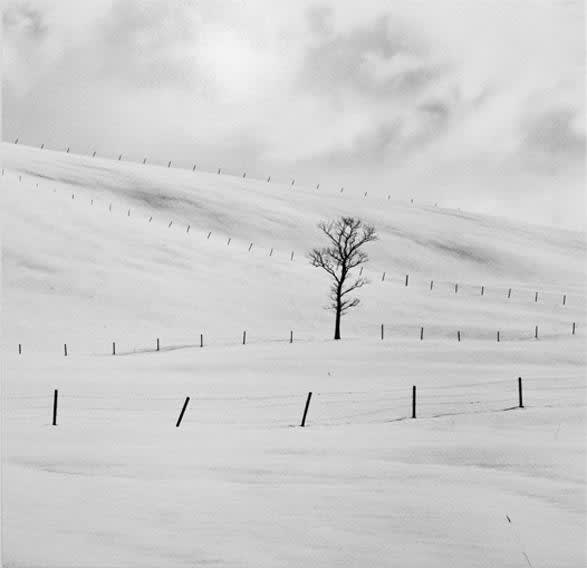
“I generally prefer suggestion over description, black and white over color and Winter over Summer.”
~ Michael Kenna
All of Michael’s most preferred elements are to be found in this sublime image.
It is also a great example of his technical, analogue prowess. A master print maker of which he is an endangered species.

“I have photographed in France for over 40 years and I could photograph there for a few more lifetimes. There is just a wealth of material to discover.”
~ Michael Kenna
Michael is also a superb maker of books and enjoys the collaboration with the greatest photography book publishers in the world. He has produced more than 70 exquisite volumes.
But this one published by the formidable Nazraeli Press is to my mind one of the most beautiful photography books in recent memory. Long sold out in this special limited edition, it is a joy to behold and a testament to both Michael and the publisher, Chris Pichler’s, immense talents.
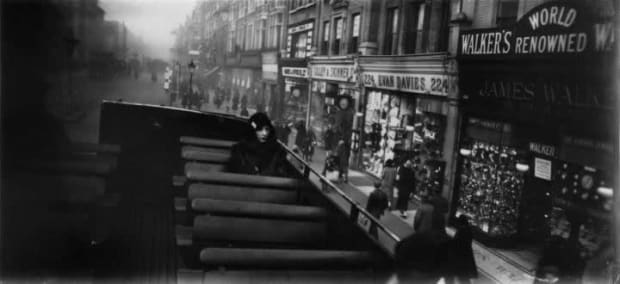
“I have never taken a picture for any other reason than at that moment it made me happy to do so.”
~ Jacques Henri Lartigue
Bibi was Jacques Henri’s first wife and he captured her here on their honeymoon driving down Oxford Street.
It looks like a typical London chilly day and Bibi looks dressed for it as she is the only one brave enough to be on top of the double decker open air bus but Jacques Henri obviously saw it as a wonderful photo opportunity and celebrated the occasion.

We are all very fortunate to spend a week with Paul Caponigro, one of the true masters of this medium. I have enjoyed a great relationship and friendship with Paul for over 30 years now. Whenever I am in need of inspiration I look at his sublime work and hear the deep tones of his voice and the wise words he has always shared with me about photography and even more important his views on life which are always profound but never ponderous. I also revel in his gift for the piano and his insight into music which are equally revealing as his gift for photography.
Let us enjoy first one of his most acclaimed and respected images “Running White Deer” -
“In my many years of photographing the landscape and prehistoric stones of Ireland, I had come to realize that the life of the place generated a quiet magic. During my photography, there was usually a herd of white deer. They were randomly roving on the grounds on an estate and so I asked permission of the owner and set myself to the task of how to photograph them. Catching them in small groups was unsatisfying but I remembered the talent of the Irish sheepdog and enlisted the help of the owner and his dog to corral a substantial number of these white beasts. I visualized the deer as being spread out before the trees of the estate and set about the choreography of the event. Some 25 or so of these deer were collected at one end of a long field and at my signal the dog was to chase them in my direction. My camera was set up so as to include on my ground glass the grass field as foreground and the trees and background with myself hidden in the tress so as not to be seen.
Not knowing what to expect I signaled and to my delight and surprise one of the deer took the lead and the others followed one behind the other. In the subdued light of the day my calculated exposure required the widest lens, aperture and a slow shutter speed of I second. I did not know and could not know what impression would appear on my film but to my delight on processing the film I found a beautifully impressionist feel made by the running white deer.
As to capturing something magical, I knew that to be the case when two white swans flew directly over my head and camera moments after releasing the shutter of the lens.”
~ Paul Caponigro
This is how photo history was made. Pure beauty!
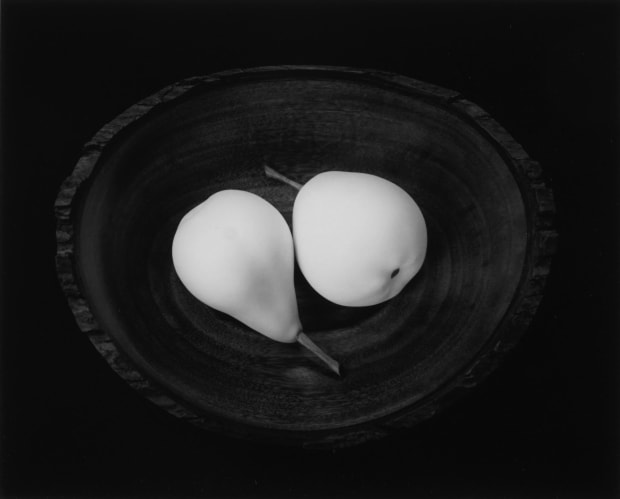
“We have to make a separation between what the intellect is chattering about and what it is really tapping into. I can’t give you the physics of it, how it actually functions; I simply know it works and if I leave it alone and not try to invent a mousetrap to catch it, the more it comes. Feelings will apprehend the spirit more quickly than the mind ever will."
~ Paul Caponigro
In the 1990’s Paul experienced some serious health and family issues which curtailed his ability to work. Fortunately for us he regained his strength and creative impulses and produced work equal to if not greater than some of his earlier accomplishments.
This image is one of them. Its sheer physical beauty when one contemplates it quietly on a wall I cannot even begin to articulate. One is speechless and almost in a trance.
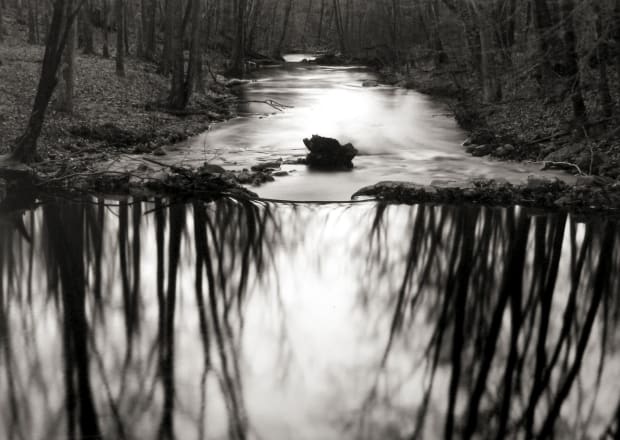
“All that I have achieved are these dreams locked in silver. Through this work it was possible, if only for brief moments to sense the thread which holds all things together. The subtle suggestions generated by configurations of cloud and stone, of shape and tone, made the photograph a meeting place from which to continue on an even more adventurous journey through a landscape of reflection, of introspection.”
~ Paul Caponigro
Paul was on a two year teaching assignment in New York City. Big cities and Paul’s temperament are not an ideal long term match.
He found some kind of coping method and spiritual peace by spending time in Connecticut in the town of Redding and created this,one of his most primal and elegiac images.
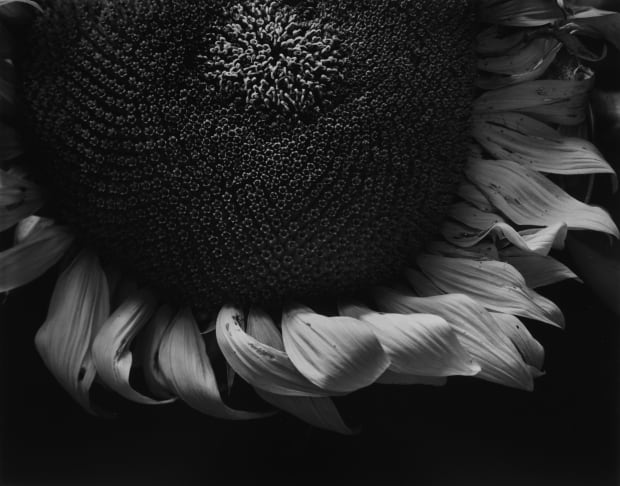
“A sunflower came as a gift from a friend and quietly took its place on my windowsill. It seemed content, as nature’s marvels usually are, with whatever notice it might receive. But as I passed it several times a day and glanced each time toward its radiance, the flower began to grow less shy. It seemed to ask, if not demand, that I draw nearer and record its moods on film. Finally I gave in and took the first step toward another world. As I dwelt upon the beauty of the sunflower, on its golden crown and ever-changing form, it began to whisper of a realm beyond the sensual mind, a realm magnificent and strange.”
~ Paul Caponigro
When I think of sunflowers and their almost irresistible attraction to sensitive, creative people I just think of two names in the history of art - Vincent Van Gogh and Paul Caponigro.

“While photographing, I do not necessarily visualize complete images before returning to my darkroom to print. Rather, my intent is to sense an emotional shape or grasp some visitation to carry forth into that dimly lit space of hopes and discoveries.”
~ Paul Caponigro
Paul has written extensively about what he calls “The Voice of the Print”.
And here is another example of his technical prowess in his sacred place of darkness that very few can match.
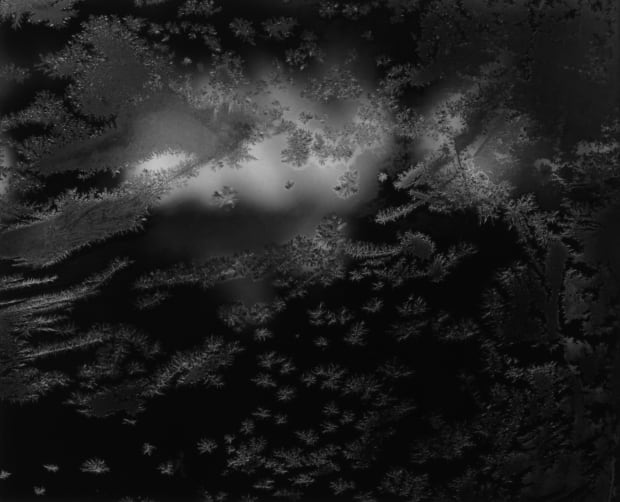
"To work, by way of the photographic image, toward an understanding of that relation which exists between one’s inner activity and ones’s external environment.
The flow of life in nature particularly attracts me. Simply because there I can record the subtle as well as the obvious results of the moving forces and principles which permeate my whole environment.
To create beauty of image. Fineness of the tonal values in the black and white photographic image, for me, is much more than producing technically excellent prints. I believe it can generate an emotional response in the viewer as readily as any human situation, provided one takes the time to allow it to come through.”
~ Paul Caponigro on his practice
What can be more simple than a frosted window? Most of us would just walk by it and not really notice them. We would take them for granted as it’s very cold outside. It’s winter after all. But to someone as gifted and intuitive and one who sees life and receives it in such a wholly different way it is something else. A powerful reflection of universal truths that each of us can bring our own interpretation to thanks to Paul’s artistry.

“At the root of creativity is an impulse to understand, to make sense of random and often unrelated details. For me, photography provides an intersection of time, space, light and emotional stance. One need to be still enough, observant enough and aware enough to recognize the life of the materials to be able to “hear through the eyes.”
~ Paul Caponigro
Taken almost 50 years ago I am still drawn to this image with the same attraction for its simplicity and beauty and desire to live with it as I was the first time I saw it.
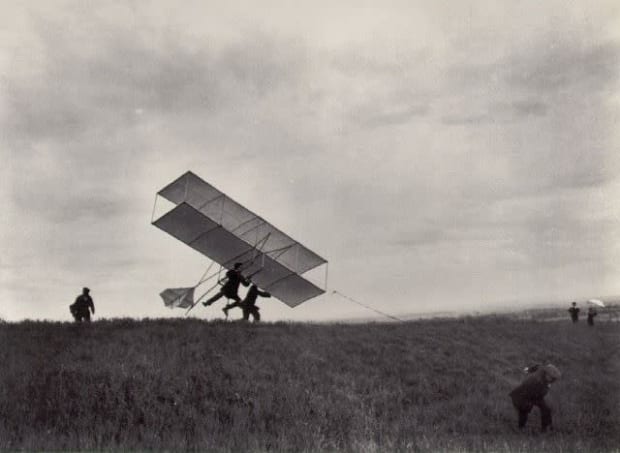
“Photography is something you learn to love very quickly. I know that many, many things are going to ask me to have their pictures taken and I will take them all."
~ Jacques-Henri Lartigue
Jacques-Henri came from a family of eccentrics not the least being his brother Zissou who was always inventing things. One of his most ambitious projects being a home-made plane. Jacques-Henri was the patient observer always there to record these family events.
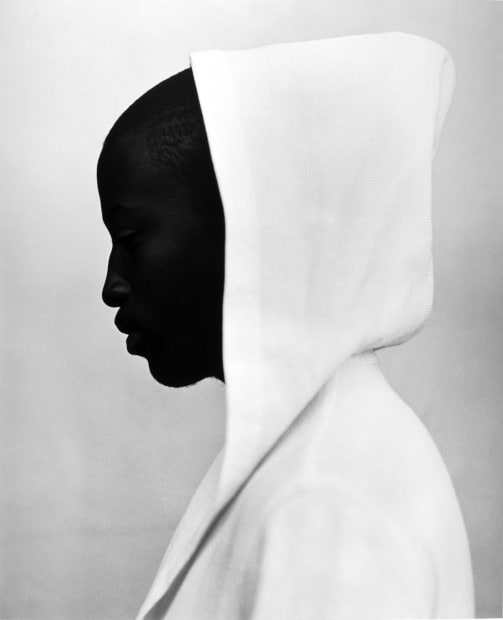
“Ironically on the rare occasion the world stops spinning and poses for the photographer who limbers up his 4x5 Linhof and points it to the stars above and then clicks.”
~ Kurt Markus
To produce a great image is like catching magic in a bottle. Even such an illustrious figure as Edward Steichen showed us that fashion photography can sometimes be a high, high art.
Kurt Markus showed us the same in this image which was photographed in Vicksburg, Mississippi in 1998. Its cut-to-chase simplicity and graphic strength is as pure and powerful as it gets.

“I learned that courage was not the absence of fear, but the triumph over it.
The brave man is not he who does not feel afraid, but he who conquers that fear.”
~ Nelson Mandela
Mandela possessed a brilliant legal mind as well as a passion for social justice. Here he is pictured in 1952 in his humble law office that he shared with Oliver Tambo who served as President of the African National Congress from 1967-1991.
As Jurgen has told us, “Mandela was on his way out and had files under his arm. I asked if he could wait for a minute. He gave me 2 minutes and we talked on the way out.”
A candid moment and insight into a man who changed the world.

“I tried to photograph the mysteries, true and magical, the soul of my people. Spain in all its passion, love, humor, tenderness, rage and pain, in all its truth and the fullest and most intense moments in the lives of these characters as simple as they are irresistible with all their inner strength.”
~ Cristina Garcia Rodero
Cristina is one of Europe’s greatest photographers. Her book “Espana Occulta” one of the most beautiful and powerful debuts. It was awarded the book of the year award at the Arles Festival of Photography in 1989.
This is my favorite image of hers. Just total connection and understanding. As she astutely says,
“We roam the world and very ofter we don’t know our own country.”
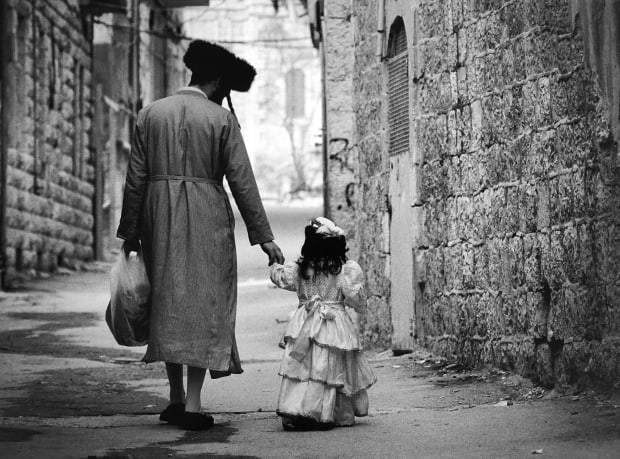
“My photographic journey has been a lifelong one, much of my childhood being spent in front of my father’s large Graflex camera. Photographic images filled our home and I spent time in the darkroom watching his images magically appear.
Over the years I have travelled extensively, camera in hand following the light, the landscape, the people, the atmosphere and the feeling of a destination. My hope is that one would sense an inner presence in my work.”
~ Judy Glickman Lauder
“Following the Light” would be a wonderful title for an autobiography if Judy ever decided to write one. But I sense she would just be too busy as she is always embarking on new photographic adventures and her mind is just full of new ideas for images. I have known very few photographers in my life who come close to her intelligence, warmth, curiosity and most of all her humanity.
Whatever subject she decides to tackle be it the landscape of her beloved Maine or the almost unfathomable subject matter of The Holocaust she imbues it with such a unique and fresh insight and intelligence and above all with her humanity. This image just tells such a universal story of the special bond between a father and a child and the love of family.
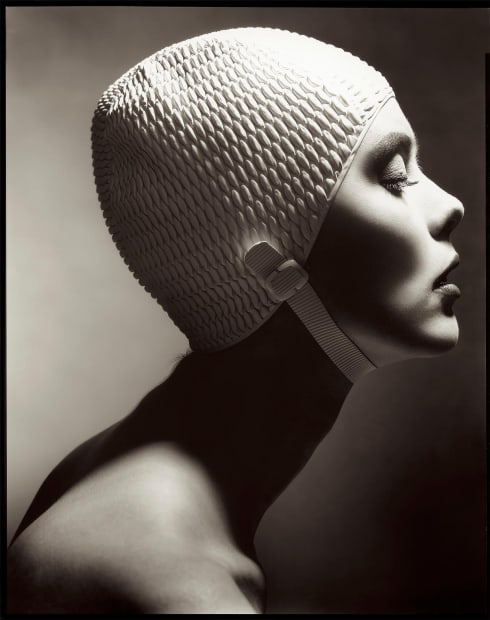
I met Len early on in my gallery career. I was impressed by his approach to photography and his attention to detail. A successful New York Fashion photographer with a sensitive, quiet manner completely the opposite to the turbulence of the industry he worked in. We collaborated on some special platinum print projects, a medium we both admired.
This is one of them. Sometimes art is generated from pure simplicity. A classic profile. A beautiful scalloped bathing cap.
Viola! Pure magic.
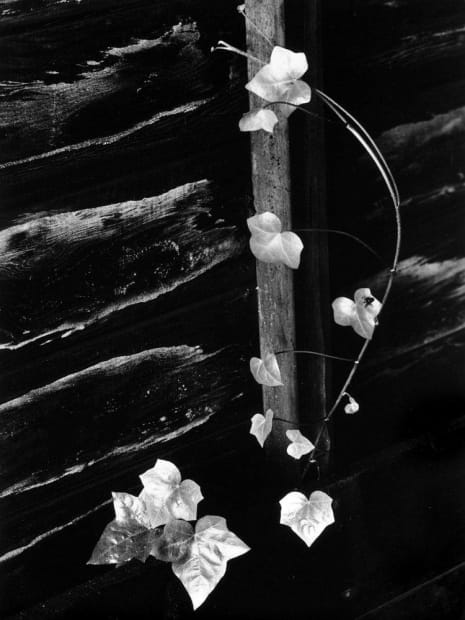
“The spring tight line between reality and photography has been stretched relentlessly, but it has not been broken.
These abstractions of nature have not left the world of appearances; for to do so is to break the camera’s strongest point - it’s authenticity.”
~ Minor White
Minor White was so much more than just a great, important 20th Century photographer. He was also a seminal teacher, writer, editor and founder of Aperture Magazine and a philosopher and a mystic. He inspired a whole new generation of photographers as he too was inspired by Alfred Stieglitz’s notion of images as metaphors and equivalents of emotions and feelings.
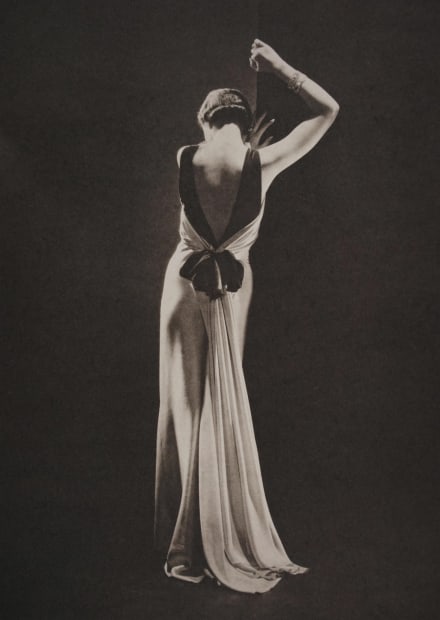
“I appreciated the fact that the model would have to understand how the gown moved and how she would behave in that particular dress so that it didn’t look as if she just put it on for a photograph but was part and parcel of it, that the dress really actually belonged to her.”
~ George Hoyningen-Huene
George Hoyningen-Huene was born into the privileged world of the Russian aristocracy at the turn of the century. In Paris, as a refugee from the Revolution, he worked for VOGUE, first as an illustrator and then as a supremely successful fashion photographer.
As chief photographer at French Vogue he created his unique style and was known above all for his stylish studio compositions using shadows and elaborate lighting to evoke the “Huene" mood.
Toto Koopman had her own amazing life. She was a Dutch-Javanese model who wound up in Paris in the 1930’s and during the Second World War served as a spy for the Italian Resistance. This is a fascinating adventure story in itself.
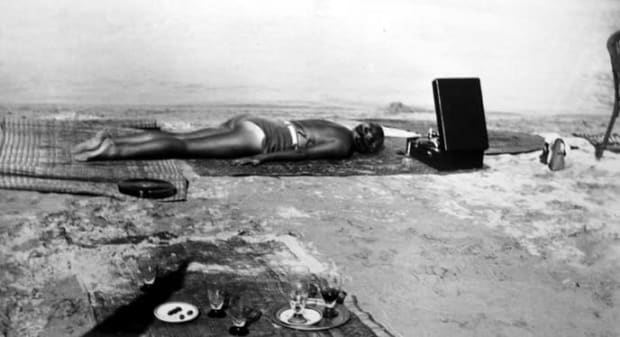
“Plage de la Garoupe.. On a mat, the phonograph and records which follow me everywhere. Beside them on the hot sun, Chou, small and lithe, the damp curls of her corn-colored hair hanging down her back beaded with drops of sea water."
~ Jacques-Henri Lartigue
Diaries, Cannes 10th July 1932
Jacques-Henri through his long and fruitful life always maintained the passion of a child with the eye of an adult. Right from the beginning he was mature beyond his years. Like Mozart a kind of a prodigy. He was always interested in fleeting moments of joy and found humor everywhere.
He discovered the Riviera with with his first camera in the company of his wealthy family when he was just eleven years old.
For the rest of his life he was a regular visitor to the Cote d’Azur taking many fine photographs in those dream-like locations and he ended his days there in 1986 with his wife Florette.
Am I the only one old enough to remember 78 gramophone records?
![THE POWER OF PHOTOGRAPHY CDXX, Young at Heart [Women leaving back on log], 1954](https://artlogic-res.cloudinary.com/w_620,h_620,c_limit,f_auto,fl_lossy,q_auto/ws-peterfetterman/usr/images/feature_panels/image/items/11/113c76a77bda40caafe52c67927dbc38/eec3f01bac99586dd7051c575a91449cj.jpg)
“The most important quality you can bring to photography is to be open to the sort of person you are.
Really in fact it is the main quality. I would only want to try and get whatever it is, for good or ill, that is me when I take a photograph.”
~ Grace Robertson
Grace was the tallest photographer I had ever worked with. She had a formidable presence and an incredible sense of humor and a wonderful smile and deep insight. This is a joyous image from her most celebrated reportage. She followed a group of working class women who belonged to the same pub on their annual Mother’s Day outing.
She drank with them beer to beer, ate with them cockles to cockles, matched their jokes for jokes and gained their trust. And it shows in the images.
As she said of her life’s work,
“My own stories concentrated on intimate worlds. Close to home.”
Grace passed away earlier this year at 90 years old. There is hardly a day that passes by that I don’t think about her. She was that special.
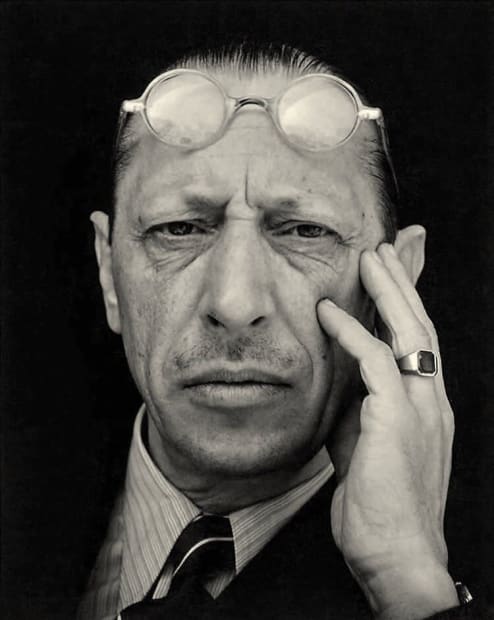
“ I had only heard Stravinsky’s “The Firebird” on the phonograph—— which I now realize is entirely inadequate. What amazing music! It held me thrilled. My hair stood on end!”
~ Edward Weston
“In order to create there must be a dynamic force and what force is more potent than love.”
~ Igor Stravinsky
Edward Weston was one of the most important and influential photographers of the 20th Century.
Igor Stravinsky was one of the most important and influential composers of the 20th Century.
It was almost inevitable that they would connect one day. Weston set the highest standards for himself in every genre he decided to work in and this image was the perfect collaboration of artist and sitter. His richly toned prints made from 4”x 5” negatives are unparalleled in the history of photography and render his vision in sumptuous detail. To hold this jewel of a print in one’s hand is a truly powerful experience. If I place it carefully near my ear I can hear the music.
As Weston said,
“I feel that I have been more deeply moved by music, literature and painting than I have by photography."
I’m not quite sure that is entirely true but they for sure have inspired all the great photographers I have ever met.

“Everything that I see must become personal, otherwise it is dead and mechanical. Our only chance to escape the blight of mechanization, of acting and thinking alike, of the huge machine which society is becoming is to restore life to all things through the saving and beneficent power of the human imagination.”
~ Jacques-Henri Lartigue
Lartigue spent his life in pursuit of happiness and love. He never set out per se to create art objects. He was always making images that give him first and foremost personal pleasure. But they certainly became for all of us “art”. I have always particularly enjoyed his images that include these elegant cars. It would have been wonderful to have joined him and and his wife Bibi and their friends on this particular day...
Joie de vivre for sure.

“My wish, with all my heart, with all my energy, with all the passion I possess, is that in 50 years time this book will not resemble a record of a lost world. Amazonia must live on.”
~ Sebastião Salgado
Sebastião has spent the last eight years shooting and preparing for his last epic project “Amazonia” about the Brazilian Rain Forest and the need for us as a global community to protect it and its native inhabitants from destruction.
We are looking forward to hosting the exhibition at our gallery in September, its first US presentation.
It will be one of the highlights of our year and the latest of our over 30 plus years collaboration with Sebastião and his wife Lélia.

“The passing of every old man or woman means the passing of some tradition, some knowledge of sacred rites possessed by no other…..consequently the information that is to be gathered for the benefit of future generations, respecting the mode of life of one of the great races of mankind, must be collected at once or the opportunity will be lost for all time.”
~ Edward S. Curtis
Edward Curtis dedicated and basically sacrificed his life to his dream project of documenting the history of Native American peoples. He created one of the most powerful bodies of work in the history of photography. Nowhere does his artistry manifest itself better than in his haunting portraits particularly of Chiefs and Warriors.
Here is the strength and dignity and life experience portrayed by this Navaho Chief. This exquisite print is nothing less than haunting and one of the most beautiful platinum prints of his work I have ever seen.
He died virtually penniless and forgotten in 1952 in Los Angeles with a scant obituary in The NY Times that just mentioned in passing that “Mr. Curtis was a photographer” somewhat akin to saying that “Rembrandt was a painter”.
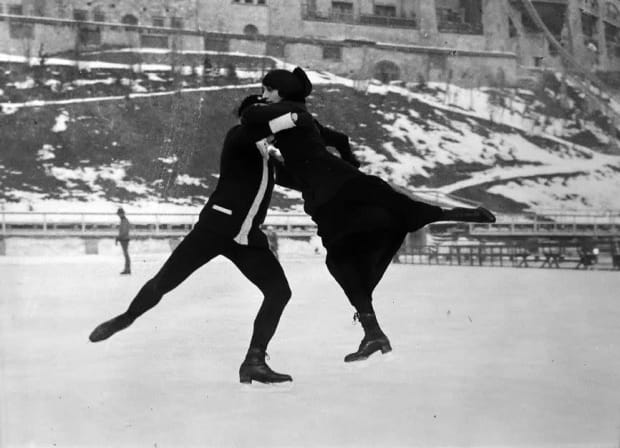
"As yet, winter sport is not very popular in France. Most people think it foolish to go to the mountains in midwinter but many English, some Americans and a few privileged French who travel to St. Moritz are not of the same opinion. They are very happy to be able to spend their vacation on top of the world, to go skiing and to enjoy the the warm and soft mountain sun.
There are more than eighteen inches of snow on the streets, and millions of snowflakes…..everywhere…in the sky. Without hurry and in heavy silence the snow keeps falling. Against the dazzling whiteness, every sound becomes more vibrant, every color more vivid……scarfs, sweaters, hair shining in the sunlight. And the laughter…..how will I ever get used to the sad, gray drabness of Paris’ streets again?”
~ Jacques-Henri Lartigue
Diary of A Century
Lartigue took to winter sports like a duck takes to water. He was only nineteen years old when he spent his first winter vacation in the Alps but it started a life-long love affair with the chic resorts of Chamonix, Megeve and Saint Moritz. He became even more alive than usual in the fresh mountain air. It certainly brought out the best in him.
He was close with his large extended family and his cousin Simone now all grown up was a frequent subject.

“If there is any method in the way I take pictures, I believe it lies in this. See the subject. Do not force it to be a picture of this, that or any other thing. Stand apart from it. Then something will happen.
The subject will reveal itself."
~ Bill Brandt
I have been looking at and studying and being inspired by Bill Brandt’s work now for over 40 years. I see something new and fresh each time I encounter it. He was a quiet, humble, reclusive figure. He spoke for the most part in a gentle whisper. One would have to strain oneself to pick up all the words he said but what words they were.
He certainly understood the English and their various idiosyncrasies. They were one of his major themes and the subject of his first book “The English At Home”.
I know this location very well. Next to Hampstead Heath in London. I can’t say I actually lived this scene but close to it. It was a very special place to bring a date to.They used to have free open air concerts in the summer and one would certainly appear cultured to anyone you escorted there.

“I believe the physical effort of making a photograph, the virtuous ability, should not be revealed in the result. As with a professional dancer, whose hours of intensive practice in perfection of technique should not be apparent to the audience, the photographer should present to his or her audience the beauty and feeling, motion and emotion- not the technique.”
~ Frances McLaughlin-Gill
I met Franny towards the end of her life. She had amazing style and energy and was one of the first female fashion photographers to break through the glass ceiling of the mostly male dominated field. She was the first female fashion photographer to be put under contract with Vogue by Alexander Liberman. She was only 24 years old at the time. She made photos with enormous energy and wit in a completely naturalistic style. Her approach was fresh and she made her models look so normal in the scenarios she devised for them.
As Liberman said,
“Not only was Franny’s work for Vogue classic, it was pure, the kind of photographic vision which bordered on improvisational theater, catching the model’s face at a sensitive moment rather than following an artificial grammar inherited from the European fashion photographers who were the stars of the moment. Her pioneering concepts made her a key photographer.”
She passed away at 95 years old. One of the greats.
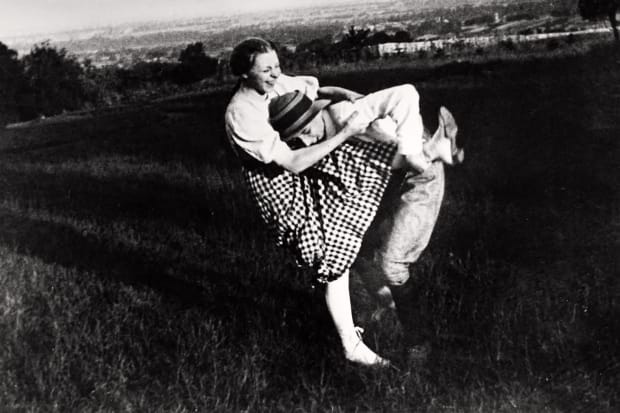
“The golden rule is 'work fast’. As for framing, composition, focus -this is no time to start asking yourself questions.
You just have to trust your intuition and the sharpness of your reflexes."
~ Jacques-Henri Lartigue
Jacques-Henri certainly had quick reflexes to have produced so many glorious moments over a long career. His skill at playing tennis at which he excelled throughout his life certainly gave him a good foundation for reacting to an instant. He was also much admired by his fellow photographers.
Richard Avedon championed his work and produced his first book “Diary of A Century”.
On the eve of the opening of Lartigue’s major exhibition at the Museum of Modern Art in 1963 one of the most sophisticated and revered photographers of his generation and not one to give out praise easily, Avedon wrote the following glorious words any photographer would have been so happy to receive.
“It was one of the most moving experiences of my life. You brought me into your world and isn’t that after all the purpose of art?"
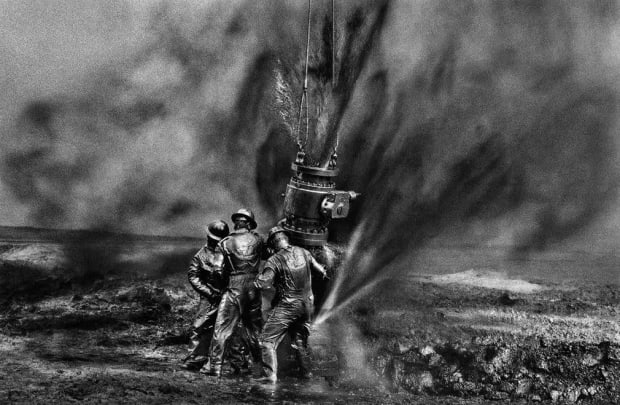
“Photography is much more than just taking pictures - it is a way of life, what you feel, what you want to express, your ideology and your ethics.
It is a language that allows you to travel over the wave of history.”
~ Sebastião Salgado
I don’t know anyone who has travelled over so many waves of history than Sebastião. He is a true force of nature as is his wife Lélia. Together, they have shown us situations that we may not have voluntarily chosen to see on our own but have awakened us to the world we live in and what issues as a species we need to confront and discuss and must open our eyes to...
His Kuwait series is a great example of one such body of work that once viewed, can never be forgotten.

“I aways try to go off the beaten path, to document the life of people, who we all are and the universality of the human spirit.”
~ Earlie Hudnall Jr.
Earlie is one of the kindest, most gentle human beings I have ever met. He was born and raised in Hattiesburg, Mississippi. His sense of community within his family and that of the African American culture is what has helped shaped his work as an artist. He relocated to Houston in 1968 and settled there and his principal subject matter since then has been the every day life for African Americans in the South.
When I look at this image I feel like I am reading one of Eudora Welty’s classic short stories with all its insights and grace.

“I believe taking a photograph is an unspoken conversation in a shared space where the sitter and the maker reveal their being in a kind of silent dance of escalating trust and affinity. We look at each other, daydream about each other and those dreams never, ever meet, except in the photograph.”
~ Melvin Sokolsky
Melvin encountered the world of Hironomymous Bosch and in particular his “Garden of Earthly Delights” as a child and it must have had a lasting influence on him. His imagination always ran rampant and when at an early age of 21 years old he found the perfect forum for it in the pages of Harpers Bazaar. He became one of their most successful photographers with his tireless experimentations and skillful craftsmanship nowhere better displayed than in his celebrated “Bubble” series for the magazine.
One must remember this was an era of pre-photoshop where the “unreal” had to be steeped in reality and where dreams were only fulfilled by hard work and dedication and passion and enormous talent.
As one of his favorite models Dorothy McCowan commented,
“There is no such thing as impossible when Melvin has an idea."
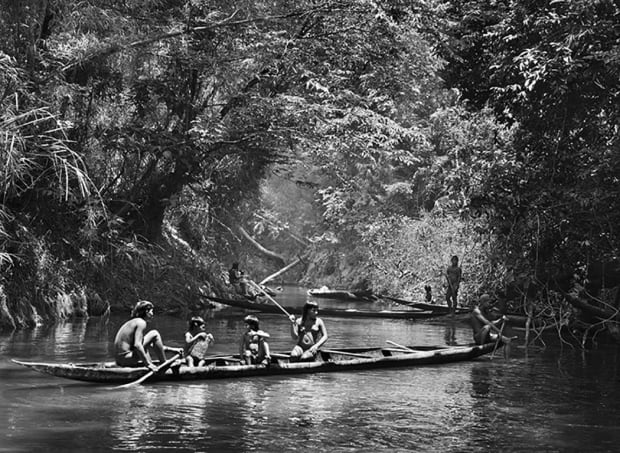
“For me it is the last frontier, a mysterious universe of its own, where the immense power of nature can be felt as nowhere else on Earth.”
~ Sebastião Salgado
The fragility of our ecosystem has been one of Sebastião's main themes throughout his long and distinguished career and how we need to respect it.
His latest powerful project “Amazonia” shows us how the Rainforests to be found in the region contain one tenth of all living plant and animal species and is the world’s largest natural laboratory which we must protect.
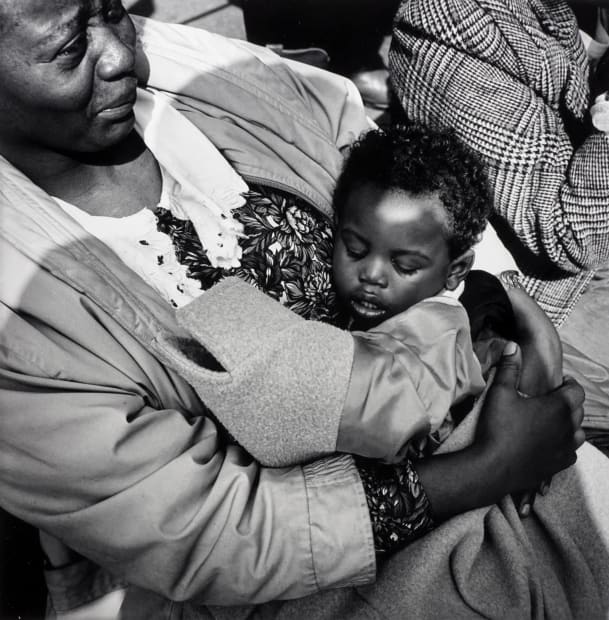
“The camera becomes an extension of me as to how I feel and what I see ..This is what my life is all about.”
~ Earlie Hudnall Jr.
Earlie works in the tradition of all the great Concerned Photographers of the 20th Century.
He takes a simple, human, everyday situation and imbues it with such a powerful universal emotion because that is who he is.
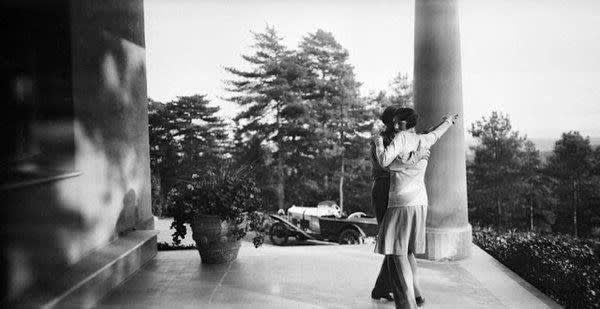
“In the twenties everybody dances all the time. At tea-time, before dinner and after dinner. The most popular dance is the Argentine tango.”
~ Jacques-Henri Lartigue
Lartigue was “discovered” by the great American photography curator John Szarkowski who gave him his first one man show at the Museum of Modern Art in 1963. There lies the irony of Jacques’s amazing life.
No one really took him seriously in his own country until he was launched in America first. Then he was embraced by his own country and worshiped as a national treasure.
As John accurately stated,
“While his photographer predecessors and contemporaries were creating and serving traditions Lartigue did what no photographer had done before or since. He photographed his own life.”
And as Lartigue himself said,
“Never look back, the first rule for happiness.”
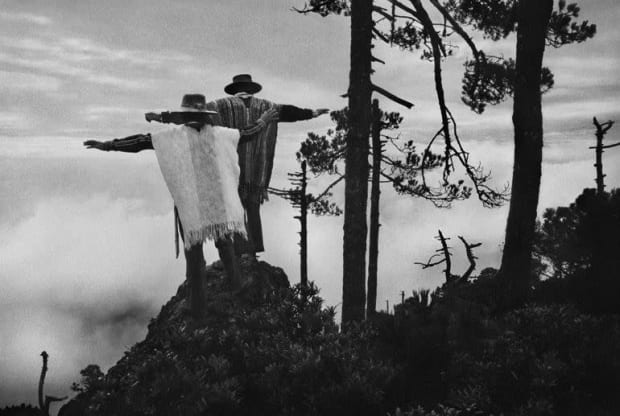
“The time spent photographing in the field is only one percent of the time. The time I take to consider, to prepare, to design, to have the concept is a full lifetime. That is the point with photography.”
~ Sebastião Salgado
Traveling through Latin America was Sebastião’s first major seven year epic project, a project in search of his roots. It resulted in his first important book “Other Americas”.
It has always been one of my favorite bodies of work. It is hard to think of it as over forty years old. It seems as fresh to me today as when I first saw it so many years ago. And this is one of my favorite images from it. Two men climb to the top of a hill and offer up a prayer for a good day. I stare at it everyday and think the same.
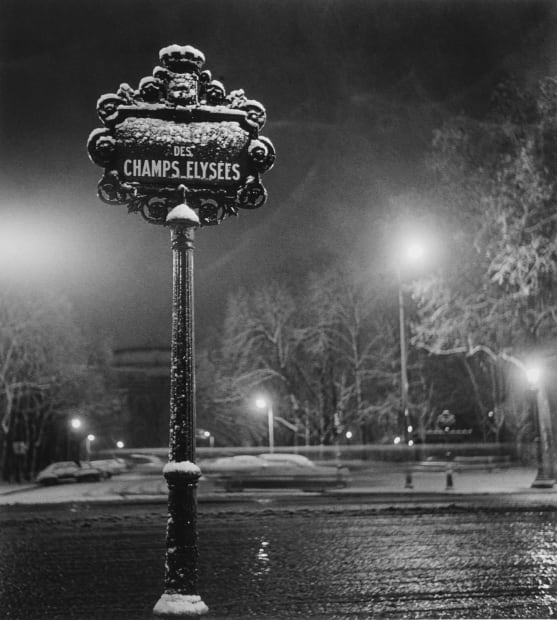
“I’m almost a century old so I’ve seen a lot of different things which are gone now.”
~ Sabine Weiss
Dear Sabine at 97 years old is a constant inspiration. She has just returned from the Arles Photography Festival where her exhibition stole the show and she was treated like a rock star.
This is one of her greatest images especially for those of us who just love Paris. She did a lot of night photography because she and her American painter husband, Hugh Weiss, loved to walk a lot in the evening. Sabine noticed the light was particularly beautiful at this moment and snow had started to fall.
Et viola magic happened.

“I hold onto that word beauty. I refuse to surrender it. It’s the traditional end of art. And tradition is part of this occupation as far as I’m concerned.”
~ Robert Adams
Robert Adams is not just an exceptional photographer but is an exceptional human being.
Not only are his prints physically beautiful and powerful but his writings on photography and indeed on life and art are some of the most eloquent and profound ever written. He is a source of constant inspiration to me and I know so many others who are involved in this medium.
His work is about the impact of human activity on the last vestiges of wilderness and open space. Often his photographs are devoid of human subjects but they always convey human presence through physical traces of life imposed on the natural landscape. Despite evidence to the contrary his work conveys a sense of hope that we can still effect change to preserve nature.
As the great John Szarkowski wrote in the forward to Robert Adam’s book “The New West”,
“Though Robert Adam’s book assumes no moral postures, it does have a moral. Its moral is that the landscape is, for us, the place we live. If we have used it badly we cannot therefore scorn it, without scorning ourselves. If we have abused it, broken its health and rested upon it memorials to our ignorance, it is still our place, and before we can proceed we must learn to love it."

“Photography tells the truth.”
~ Earlie Hudnall, Jr.
In the hands of an extremely sensitive and intuitive soul which is what Earlie is, he reveals all inner human truth in his quiet art.
![Morris Engel, Untitled [family in window], 1947](https://artlogic-res.cloudinary.com/w_620,h_620,c_limit,f_auto,fl_lossy,q_auto/ws-peterfetterman/usr/images/feature_panels/image/items/ec/ecb5699cd547487db5f9d20d41e36fac/581b5b1eccbb402232ef05aab9a56147j.jpg)
“It was relatively easy for me to shoot completely candid pictures and people would be completely unaware of my shooting.”
~ Morris Engel
Morris could photograph incognito by using a Rolleiflex 2.25” square, twin lens reflex camera, shoot from the hip and just glance down at the frame and just see the top of the picture. He didn’t have to look at the camera anymore.
He was a true New Yorker. He never drove a car and always took subways and buses and walked everywhere for the most part always looking. He enrolled at an early age in a class at the New York Photo League, a group dedicated to raising social consciousness through documentary photography. He worked with Aaron Siskind on his Harlem Document project and produced a wonderful story on this child Rebecca pictured with her mother and two sisters, my favorite image from the series in this beautiful vintage print...
Behind the camera he was a man of great heart and sensitivity, a poet of urban life and a wonderful filmmaker too as evidenced by his ground-breaking highly respected independent film “Little Fugitive”. The great French "nouvelle vague" filmmaker Francois Truffaut always said it had a huge influence on him and his films.
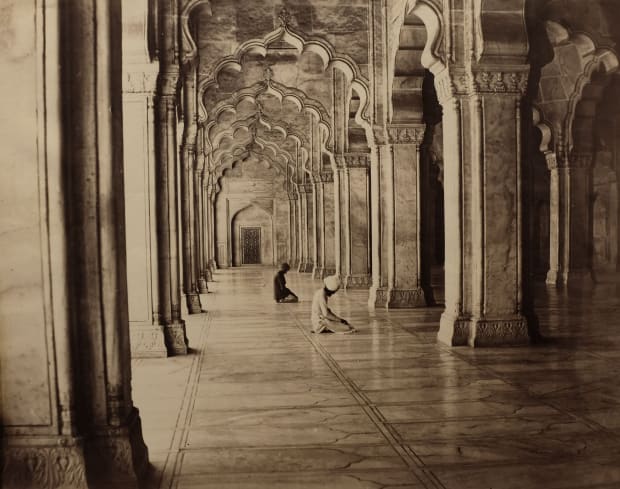
"The young photographer in his eager desire to master the technical aspects of the medium very frequently pays no attention to the artistic properties of his pictures…..Such I freely confess, was the case with myself…..so having in some degree mastered the difficulties of manipulation, my ambition spurred me on to attempt to produce pictures which should be as much admired for their artistic qualities, as for their excellence viewed in a purely photographic light."
~ Samuel Bourne Feb. 24,1860
Samuel Bourne was a British photographer who started his career as a bank clerk and taught himself photography and spent a prolific seven years from 1863-1870 living and working in India.
His images possess a luminescent quality that exemplifies classic Raj Photography.
I started my collecting career by mainly acquiring 19th Century travel photography because it was the only thing I could afford to buy at the time but I still love it to this day, I guess it allowed me to be an armchair traveler and I welcomed the opportunity to discover places and cultures I could only dream of experiencing in real life.
This “Pearl Mosque” took seven years to build and was completed in 1655. It is more than just an architectural study. It is ageless in its beauty and it exudes a deep humanity and peace.

“Departures and arrivals are in the nature of life. As a photographer I have probably had more of them than most people. Some departures went smoothly, sometimes they hurt. The arrivals were always hopeful. Things change in every life and disappear, but it is the photographs that remain from my life. They are what I looked at, fell in love with (or didn’t) and never forgot. There are pictures of men and boys, women and girls, statues, pensive monkeys, moments that took my breath away, angered me, made me smile, that broke my heart."
~ Charles Harbutt
“Le Mistral” was a daily express train that went from Paris to Nice between 1950-1982.
On a memorable day in 1975, Charles was just another passenger. But he was given a gift.
When I look at this image I feel like I am reading a great Flaubert novel with layers of stories and thoughts and mystery. I do not know the ending but I feel just like the photographer must have felt, that I am on the journey with her.

“Being by nature romantic, I take pictures of moods and emotion, reinforcing them, if necessary, through manipulation in the darkroom, entirely in the spirit of the Swiss photographer, Gotthard Schuh.
We each take pictures only of what we see. And we each see only what corresponds to our nature.”
~ René Groebli
The Eye of Love is a tender photo essay on a photographer’s love for a woman, his wife Rita, on their simple honeymoon in Paris in 1952.
No epic images. No grand statements. Just simple, real, intimate emotions shot within the confined space of a small room in an inexpensive 2 star hotel. A visual poem of love which established René’s career as a new master. Time has not weakened its impact. In fact just the opposite. It has matured into a “classic” that just enters our hearts.
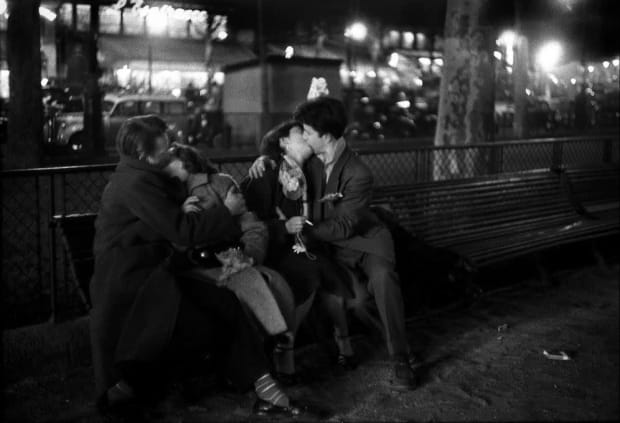
“I never pose anything. It’s always just an instant.”
~ Sabine Weiss
This image of Sabine’s always puts a smile on my face. It is a classic post-war moment where memories of hard times, rationing and sad events are forgotten in that most elemental of acts, a loving kiss all be it not so clandestine.
Toujours l’amour.
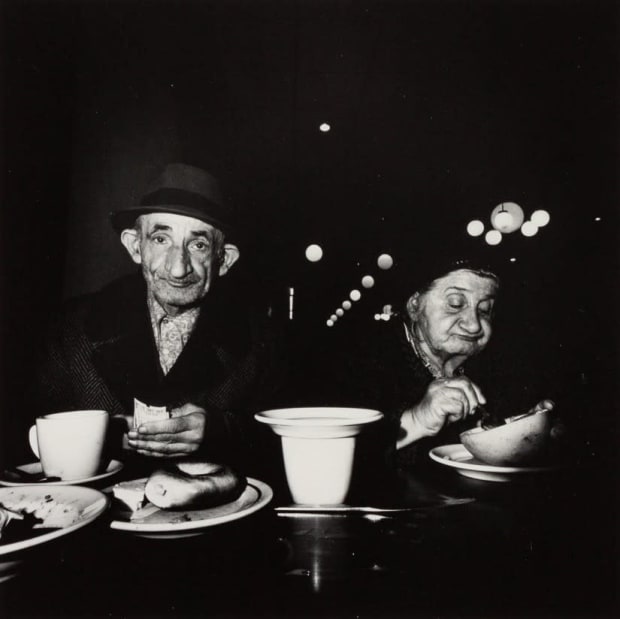
“A good pastrami sandwich could bring peace to the world.”
~ Bruce Davidson
I have always loved delis. I seek them out whenever I’m traveling. I guess it stems back to my childhood. My dad loved them. He was a very silent man but seemed to come alive when he was in one. It was often a place we could spend some quiet time together on a special occasion like a birthday at his favourite one in the East End in London near where we lived.
It was something beyond mere comfort food. It attracted people like my dad who were trying to find their place in a modern world having lost the traditional world from where they and their own families had come from.
Bruce Davidson connected with the great writer Isaac Bashevis Singer in the early 1970’s having produced a documentary on him. Singer introduced him to The Garden Cafeteria on the Lower East Side in New York where Singer would often eat having dropped off a story written for The Jewish Daily Forward whose offices were nearby.
The images Bruce took there have a poetic melancholy to them and many of his subjects had been displaced and shattered by their experiences of the Holocaust and were struggling to survive again in a different way in an unfamiliar modern New York.
As Bruce eloquently put it,
“Isaac Singer allowed me to find something I had never been able to reach before.”
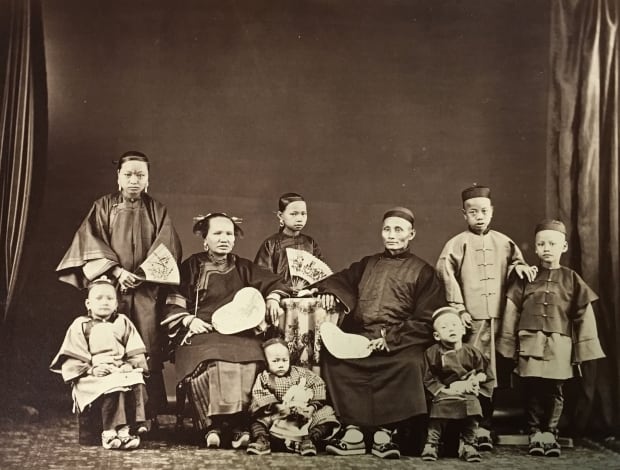
William Pryor Floyd was an innkeeper’s son from Cornwall, England but like all of his contemporaries who were smitten with the new technology of cameras he also had a great sense of adventure and wanderlust.
After working in Shanghai in 1864 and in Macau from 1865-1867, the English photographer operated one of the most successful studios in Hong Kong from 1867-1874. He obviously had a great sense of composition and an ability to get his sitters to relax in front of his lens.
The wonderful thing about 19th Century Travel photography for me has always been the universality and timelessness of much of its subject matter.
Families are families all over right?

“A photograph is a collision between a person with a camera and reality. The photograph is typically as interesting as the collision is.“
~ Charles Harbutt
I was not aware of Charles when by chance I discovered him in a small exhibition of collector’s favorite images in Los Angeles in the early 2000s. The name was unfamiliar but the power of this photograph was immediate and I was determined to find out more. I contacted him and on my next trip to New York arranged to go visit him in his apartment near Washington Square.
He was a quiet, down-to-earth man with a wry sense of humor. We looked through some boxes of work together and I was just overwhelmed by the gems he was showing me. Charles had a nervous energy about him despite being shy.
He constantly chain smoked. I had to retire to the balcony from time to time just to escape the smoke. I just loved the work but asked him half jokingly that a condition of our collaboration would be that he promised me he would stop smoking as I was concerned for his health.
We enjoyed a wonderful relationship but alas he did not listen to me or to anyone else about his habit. But the work spoke for itself. This image is just a spectacular reflection on urban life in the same vein as a great Edward Hopper painting.
The individual placed within it trying to figure it all out. I was so happy we “collided”.

Milton Miller is widely considered the foremost portrait photographer in 19th Century China. After mastering the art of photography in San Francisco in the 1850’s he travelled to China in 1860 to assist the photographers Howard and Weed. By 1861, Miller ran a photography studio in Hong Kong and Guangzhou specializing in portraits of influential Chinese and foreign citizens.
This exceptional albumen print is a prime example of his special talent. The subject gazes forward at the camera establishing a powerful connection with the viewer. It has a jarring intensity but Miller shows the remarkable empathy he must have had with his sitter. It seems so modern.
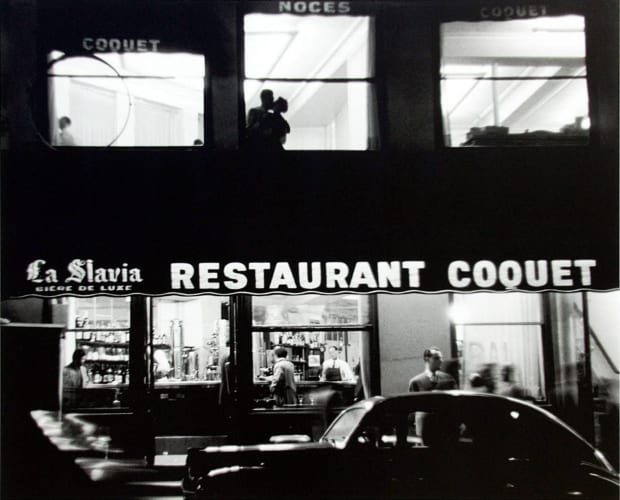
“I take photographs to hold on to the ephemeral, capture chance, to keep an image of something that will disappear, gestures, attitudes, objects that are reminders of our brief lives. The camera picks them up and freezes them at the moment that they disappear.”
~ Sabine Weiss
A great example of chance in life. A busy street, bustling away. Cafe society in full swing in the foreground and on a second floor a stolen kiss. A story within a story.
Eternal Paris.
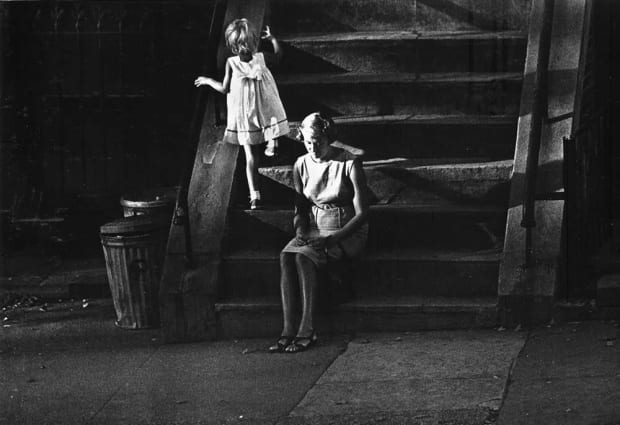
“As a photographer I’m only really looking for each new picture of mine. I try to pass that disease on to anyone interested.“
~ Charles Harbutt
Not only was Charlie a brilliant, brilliant photographer as evidenced by this beautiful mother and child image from a pre-gentrified Brooklyn. He also gave freely of his time and energy and accumulated knowledge.
He was a much loved Associate Professor of Photography at Parsons School of Design in New York and inspired a whole new generation of photographers. In addition he served not one but two terms as President of Magnum Photos which attests to not only his total dedication to his medium and to fellow practitioners but also to his immense reserves of patience and people skills. Strong-minded, intense, talented photographers each with varying and constantly changing opinions on everything are not the easiest cast of characters to organize but he succeeded.
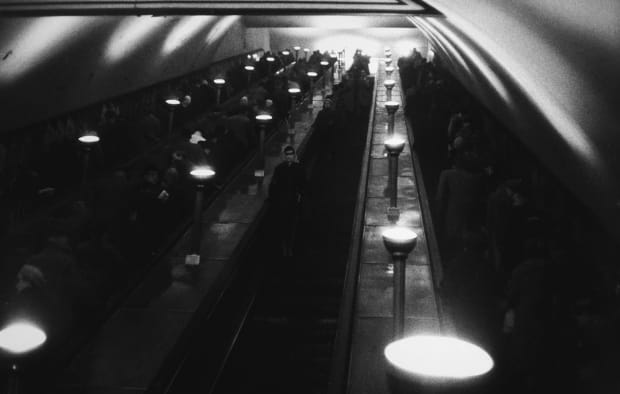
“I can only materialize that world of phantoms when I see something that resonates within me.”
~ Sergio Larrain
Sergio Larrain is one of those mythical figures in the history of photography. He created a small body of work and then gave it all up to live a simple existence in isolation in his homeland. He was appreciated and respected and encouraged by no less a giant in the field than Henri Cartier-Bresson who brought him into the Magnum family. But working on assignments with deadlines and all that precise and structured professionalism that goes along with the job did not suit his temperament or personalty.
He was given a commission to document London for 4 months during the cold winter of 1959 by the British Council. It is one of the most brilliant, poetic bodies of work ever created about this city or any city come to think of it that I have ever seen. It has such personal resonance. Tottenham Court Road was my “stop” and the epicenter of my world growing up there, the stopping off point for all the book stores, museums, theaters, and jazz record stores I devoured.
I joined the “cult” of Larrain worshippers from this body of work and also perhaps his most celebrated series on the port city of Valparaiso. The appreciation and respect for the work was so intense that I planned to go meet him with our mutual friend the great Magnum Photographer René Burri who agreed to take me to see him. Sadly that would not come to pass as both Sergio and René became sick and the trip was cancelled.
What a journey that would have been in the presence of these Masters.

“The young photographer in his eager desire to master these very frequently pays no attention to the artistic properties of his pictures…… Such I freely confess, was the case with myself…..so having in some degree mastered the difficulties of manipulation, my ambition spurred me on to attempt to produce pictures which should be as much admired for their artistic qualities, as for their excellence viewed in a purely photographic light.”
~ Samuel Bourne
Samuel Bourne is justly regarded as one of the finest landscape and travel photographers of 19th Century India. He had that great combination of a fine eye for composition allied with a high technical skill.
He spent a very productive 7 years there from 1863-1870 but came back in 1867 to marry his love Mary Tolley. They came back together and their first child Constance was born in India. It’s rare to find such a personal, tender, loving photograph in such a body of work but it is rich in feeling.
The family left India on 27th November 1870 on the SS China, returning to England via the newly completed Suez Canal. He became a very successful cotton mill owner and manufacturer and had four more children. He died on 24th April 1912 at the age of 78. He never returned to India.
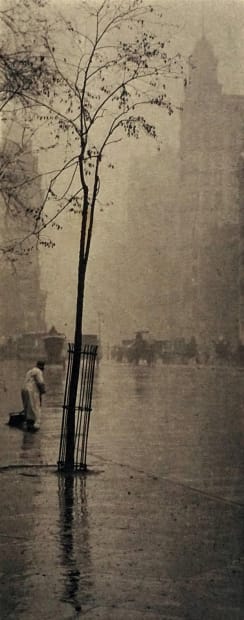
“At least it can be said of me, by way of an epitaph, that I cared.”
~ Alfred Stieglitz
There has never been such a formidable character as Alfred Stieglitz in the whole history of photography. He cared about so many things. Of course about being one of the greatest photographers who ever lived but he cared about so many other things beyond his own photographic work.
He was the first great impresario of Photography, promoting his belief that it should be taken as seriously as all other artistic practices. He ran a gallery, published journals including the seminal “Camerawork”, anything to his mind that would advance the overall “cause" and helped and encouraged and promoted so many photographers and artists that he personally believed in.
This gem of a print was taken on the edge of Madison Square close to where his 291 Gallery was located. It has an almost Japanese quality and feeling to it reflected in its pure and simple approach. It has perfect balance. The tree in the foreground sharply defined, and the soft grey light in the background gives it its delicate feeling and dreamlike aura.
I have always felt this to be a self portrait. Stieglitz is both the tree and the sweeper working together to help bring a new vision for a modern world and to teach America a new way to look at itself.

“Beyond the rudiments, it is up to the artist
to create art, not the camera.”
~ Brett Weston
Some of Brett’s greatest work was his dunes series. It suited his work style like a glove. He was an early riser. Mornings were best for photographing sand dunes. The cool of night calms the wind and the air is at its clearest and there was no one else around to disturb his peace and concentration. Light meant photography and for Brett there was only photography or the anticipation of photography.
That was his life, plain and simple.
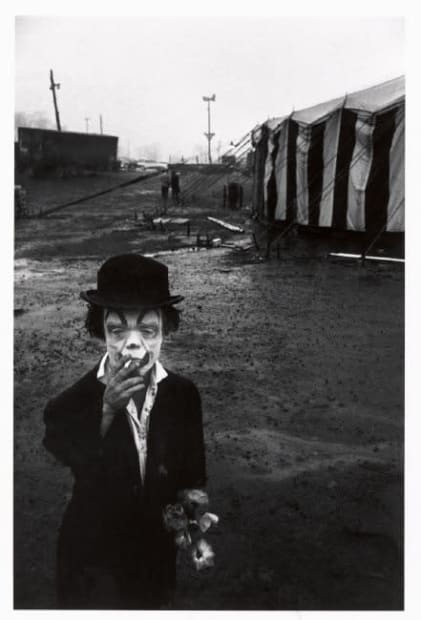
“If I am looking for a story at all it is in my relationship to the subject - the story that tells me, rather than that I tell.”
~ Bruce Davidson
This is one of Bruce’s most powerful and moving photo essays. He discovered a tent circus in the Palisades Amusement Park in New Jersey and saw a dwarf clown outside on a dreary plot of land near the circus tent. The clown wore a Charlie Chaplin get up, white face makeup and a pensive expression. With downcast eyes and a bedraggled paper bouquet in one hand, he took a puff of a cigarette. Click.
He befriended this Clown whose name was Jimmy Armstrong who trusted him and allowed him to enter his life. Bruce identified with his loneliness and found a deep truth and humanity that is hard not to be deeply moved by even after 60 years since the images were first published in Esquire.
Even though they seldom spoke, Jimmy eventually told Bruce he was his best friend.
The following dedication appeared in two of Bruce’s books “Circus” (2007) and Bruce Davidson Black and White (2012).
“For Jimmy Armstrong known as the “Little Man”"
“He was a giant in my eyes”
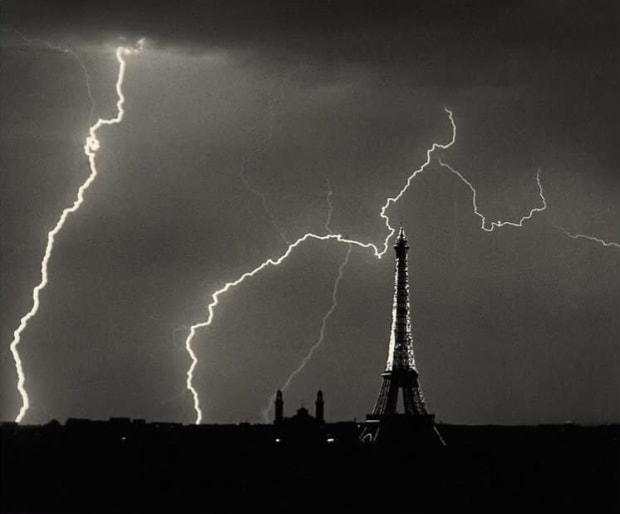
“We all owe something to Kertész.”
~ Henri Cartier-Bresson
I remember one memorable day sitting with Cartier-Bresson and I managed to get him to talk about photography and photographers, something he was extremely reluctant to do as he felt that was indeed part of his past life as he was now creatively focused on his drawings and paintings.
Somehow the subject of Andre Kertesz came up, perhaps the only other photographer I revered as much. Tears welled up in Henri’s eyes as he talked about his greatness and his influence on him and I experienced the same emotion.
It was like Andre Kertész was present in the room with us. Something I will never forget.

“Nature is a great artist, the greatest. I’ve seen rocks and forms that put Matisse, Picasso and Brancusi to shame. You can’t beat Mother Nature.”
~ Brett Weston
You can stare across a room and immediately notice a Brett Weston photograph. It certainly has a distinct look to it which takes years and years of intense dedication to a now often increasingly rare analogue craft.
He was notorious for going to bed at 8pm and commencing his solitary darkroom practice at 3-4am most of his life, when he was not en route to another location.
He paired his life down to its essential simplicity so he could concentrate on his art, something he learnt from his equally dedicated father Edward Weston. Close throughout their lives Brett developed his own strong photographic vision and voice.
Unlike Edward, Brett ventured outside of America in search of new challenges. He traveled extensively in Europe and to Japan but it was in Holland that he created one of his most celebrated and sought after images.
This at first glance seems like a traditional landscape but in Brett’s hands with his ability to present a deep space along a misty canal with the trees lining its banks receding in short rows into the distance, he turns it into a dream that envelops the viewer and takes them on this special journey.

“The simple answer to why I take pictures is that it makes me happy.”
~ Martin Elkort
George Bernard Shaw wittily quipped as was his manner that “Britain and America are two nations divided by a common language”.
There were many American colloquialisms that it took me a long time to fully understand when I first moved here. One of them was this one, but thanks to Marty’s wonderful photograph when I first discovered it many years ago, it was one less I had to figure out.
It’s a merry-go-round at Coney Island. Marty positioned himself about 10’ away from this hollow chamber which contains brass rings and if one is pulled out, another one slides into place. As the merry-go-round goes around and around, the kid tries to grab it each time. It has entered into the common language with its aspirational thoughts but this is its derivation.

“I cannot even tell you how many beautiful things I see here in Paris that the others don’t.”
~ Andre Kertész
On his arrival in 1925, Kertész made Paris the focus of his work. Perhaps because he was an outsider from Hungary he discovered things many other local photographers missed. His name Kertész in Hungarian means “gardener” and Paris at this time was the greatest and most stimulating place in the world to roam and plant in. He returned to Paris whenever he could to escape his loneliness in New York.
This is a rare later image but has all the simple poetry he is revered for.

“I’m not a verbal person. Look at my work and decide for yourself. It’s hard to put it into words.”
~ Brett Weston
Unlike many photographers who have left us long treatises about the meaning of their work and their practices Brett was a man of very few words. He let his images speak for themselves which is one of the reasons I respect him so much.
There are very few places on earth that have such splendor and beauty as the Big Sur Coast. It has been a much visited and photographed locale. But few have managed to capture its essence as well as Brett did here.
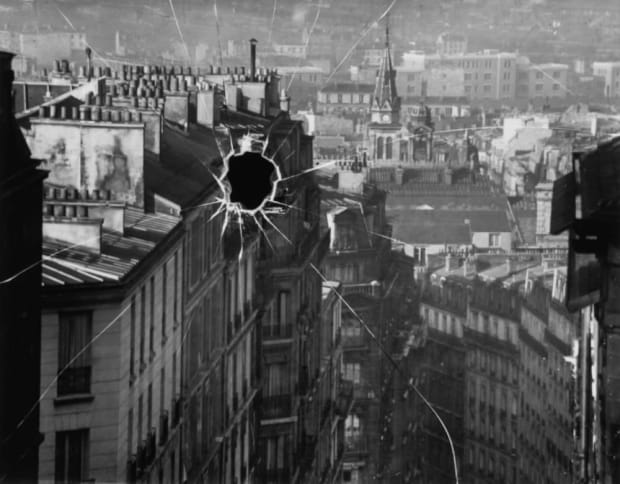
“In this picture of Montmartre I was just testing a new lens for a special effect. When I went to America, I left most of my material in Paris and when I returned I found sixty percent of the glass plate negatives were broken. This is one I saved but it had a hole in it. I printed it anyway. An accident helped me produce a beautiful effect.”
~ Andre Kertész
Sometimes fate has other things in mind and surprises happen. Kertész had thought he had lost forever much of his earlier Paris work when he left for America and a new life with his wife Elizabeth. His negatives were entrusted to a woman who had been one of his editors and for safe keeping she had stored them in her country house during the war.
This negative with it’s bullet hole-like fracture was returned to him in 1963 along with other negatives damaged and undamaged that he had completely given up about ever retrieving. He discarded all the broken ones except this one which subsequently became one of his most sought after images.

“I photograph out of love.”
~ Brett Weston
Brett towards the end of his life left the Carmel area and moved to Hawaii. This was no attempt to retire or even semi-retire.
I don’t think he ever embraced the concept of such a thought. Work and creating beauty was his “modus operandi" which guided his life. He was relentless in the pursuit of his craft. In fact his work ethic never diminished and was even given a new boost by this move. The island of Hawaii gave him fresh creative inspiration and personal renewal to create a body of work equal to many of his earlier masterpieces.
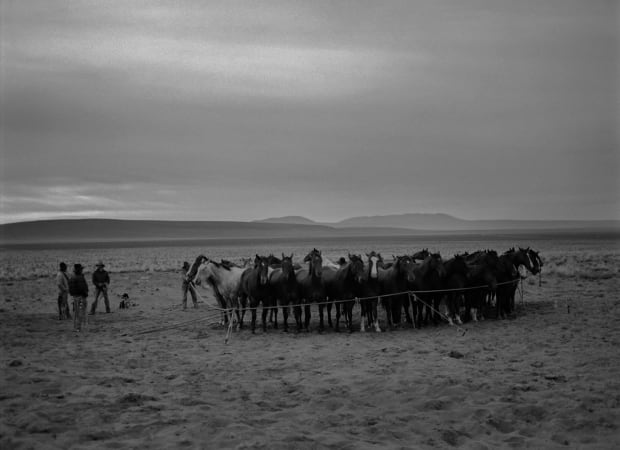
“I don’t believe in a photograph until I make a print of it. It doesn’t exist for me. It’s just like thin air. It takes guts to make a print. You know you have to convince yourself that this is you, that you’ve made this and that you’re putting your name on it and you also have to believe that maybe somebody else either can appreciate the work you’ve done or can appreciate that this is you. There’s nothing else to hide behind.”
~ Kurt Markus
Kurt belongs to a dying breed. He is himself an endangered species. An artist who places themself deep into the tradition of their craft.
When you hold the physical print in your hands that he has poured his soul into it is almost like a religious experience. It is a miracle that places you immediately into the narrative of the story he is telling and the people he so deeply cares about.
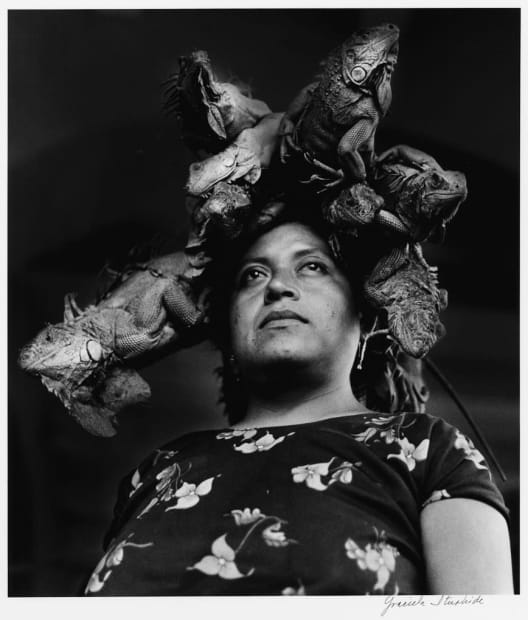
“I have always said that my camera is a pretext to know the culture, its people and the way of life……I photograph with the surprise of what I find and the passion that I have in my work and I learn the different ways of living in my country.”
~ Graciela Iturbide
Graciela is one of Latin America’s most renowned and revered artists. Wherever she travels she uses her camera to reveal the humanity of her subjects.
Working in the town of Juchitan she saw Zobeida Diaz as she made her way to market carrying, as Iguana sellers sometimes do, her wares on her head. Graciela asked permission to photograph her
and the image became one of the most celebrated images in the history of Latin American photography.
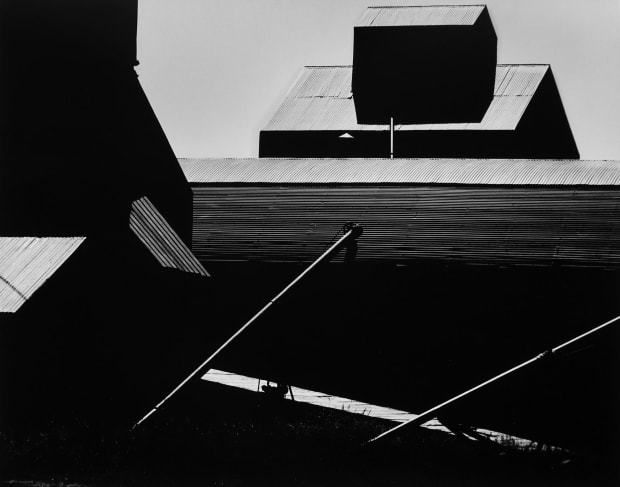
“The only competition is you and your work.”
~ Brett Weston
Brett was blessed to have had such a talented and nurturing father in Edward Weston. If he didn’t have his own enormous talent and individual personality and strength of purpose it could have handicapped him as so many children who pursue the same artistic profession as their celebrated parents have had to contend with.
But Brett emerged from his father’s footsteps with his own vision intact and managed to carve out his own distinct legacy to become one of the foremost 20th Century modernist photographers, no better evidenced by his transcendent image of this grain elevator.

“Really nothing does happen in my picture. I guess maybe that’s the moment I recognize it is a picture."
~ Kurt Markus
I’m not sure I agree with Kurt when he says this. There are always many layers of storytelling going on in every image.
He is a quiet, modest man possessed with an enormous talent. He has helped me understand the power and mystery and sheer beauty of the West and the people who inhabit it.

“We all require and want respect, man or woman, black or white.
It’s our basic human right.”
~ Aretha Frankin 1942-2018
“You don’t have to go looking for pictures. The material is generous. You go out and the pictures are staring at you.”
~ Lee Friedlander
Aretha Franklin was one of the most influential female vocalists of the 1960’s and Lee Friedlander is one of the most influential and important American photographers of his generation.
Apart from pursuing his own personal work for two decades from the 1950’s through the 1970’s he was the in-house photographer for Atlantic Records, the most dynamic and diverse record company of its era and the home for many of music’s post war all-time greats. Many of his images became “The” iconic image of these musicians and performers.
This is undoubtedly the greatest portrait ever of the amazing Aretha Franklin. He for sure captured her essence.
As the great Atlantic record producer Joel Dorn so eloquently put it,
“Lee’s magic lies in his ability to completely surrender to his subject whether it’s a person, a tree or a building. His work is egoless. He’s practically an invisible part of the process, choosing to receive rather than send. He comes away with so much because he takes nothing, only what’s offered.”

“Lillian made visible that heart breaking invisible place between the appearance and the disappearance of things.”
~ Richard Avedon
One of the greatest fashion photographers ever, Lillian never ceased to amaze me with her energy and determination to always challenge herself. She was working up to the day she passed away which is one of the reasons I think for her productive longevity.
Born in Brooklyn, New York in 1917, she entered the fashion trade through the design class of famed art director Alexey Brodovitch along with Richard Avedon and Irving Penn. Noticing her astute visual talents, Brodovitch appointed Bassman as his Co-Art Director in the founding of “Junior Bazaar” magazine in 1945. Here she helped launch the careers of many notable photographers of the century including giving early assignments to Avedon, Robert Frank, Leslie Gill, Arnold Newman, Paul Himmel and many more. After the publication was absorbed by Harper’s Bazaar and at the urging of her colleagues, Bassman began to photograph the models she worked with and quickly developed a body of work that was unlike any other fashion images of the period. They still look as fresh and innovative today as the day they were taken.
I was so honored to have hosted her first West Coast exhibition and to have collaborated closely with her for over 20 years.

“I read a Sufi poet, a very old man where he speaks of the “language of the birds” which is a very beautiful story. It is very difficult to tell it all but in short all the birds gather together to make a journey
to find God. On that journey they come and they find each other.”
~ Graciela Iturbide
I too, ever since childhood, have always been fascinated by flocks of birds. For some unfathomable reason they make me happy. Especially in the current times we are all living in, I try and seek them out more and more.
Thank you Graciela for reminding me how beautiful they and your images are.
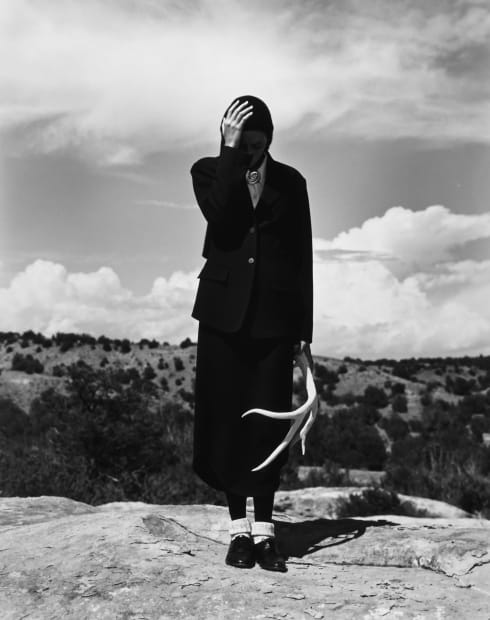
“My love affair is with the West. I could never have my heart elsewhere, not for long. I need the space and distances as much as I need to eat.”
~ Kurt Markus
The fashion world discovered Kurt’s talent and being a fluid, creative industry always sort out the best of the best to engage with. Nothing has really changed since Conde Nast first hired Edward Steichen to work for his magazines at the beginning of the 20th Century.
It is always an intense balancing act for any creative artist such as Kurt to not only satisfy the clients wishes but also to produce something very personal that they too can be proud of. This is such an image. The project was inspired by no less a cultural icon than Georgia O’Keeffe, who was beyond fashionable even though she expressed no interest in fashion at all. She lived for her art and just that.
In the model, Cynthia Antonio, Kurt found his muse and with his love of the landscape and his eye for balance he brought something so special to this genre that it stands alone on its own merits.
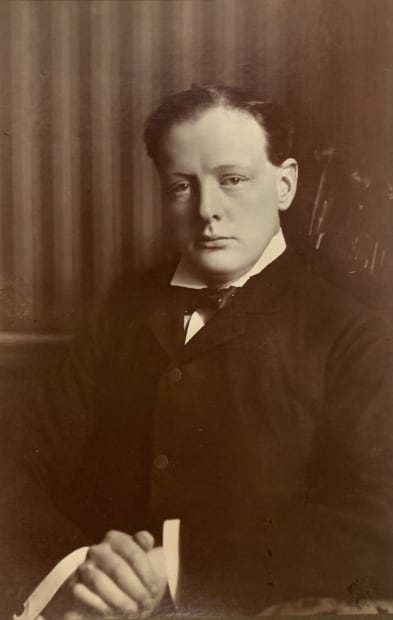
"Success consists of going from failure to failure
without loss of enthusiasm.”
~ Winston Churchill
It is always interesting to view early portraits of great figures of history before they reach the pinnacle of their achievements.
Such is the case here with Sir Winston Churchill, surely one of the most important figures in history.
He is young here, about 33 years old, but one can already sense a steely hardness in his eyes and mouth, characteristics that he would project through his long and momentous life.
This rare and uncommon early portrait was taken when he was a liberal M.P. representing Manchester Northwest in Parliament. He was also a newly appointed member of the Privy Council and Under-Secretary of State for the British Colonies, playing an active role in African affairs.
There is another print of this image in the National Portrait Gallery in London.

“Sure, I’d like to live regular. Go home to a good looking wife, a hot dinner and a husky kid. But I guess I got film in my blood.
I love this racket. It’s exciting. It’s dangerous. It’s funny. It’s heart breaking.”
~ Weegee
Weegee aka Arthur Fellig was one of the all-time characters in photography. A one-of-a-kind for sure. He was the least likely person to find at a beach. His usual urban beat was covering fires, floods, car wrecks and murders.
But on Saturday, July 5th, 1942 on a very hot day in front of teeming humanity he climbed up on a life guard station and screamed and danced until everybody started to look up at him and when they did he took the photograph. He said “It was that simple”.
I don’t quite believe him but it is surely one of the greatest photographs ever to have been shot in New York. I guess this is the antithesis of “social distancing”.

“I never had a “project”. I would go out and shoot, follow my eyes and what they noticed, I tried to capture with my camera for others to see.”
~ Helen Levitt
Helen was one of the feisty, go-getting, self-directed, poker-loving greats of street photography.
She was once called by a critic “the most celebrated and least known photographer" of her time.
But she did finally gain great renown in her lifetime and received many major museum exhibitions and multiple publications paying tribute to her.
In this photo, two children hold up a broken mirror as others crowd around to examine the shards of glass left behind. Behind the frame a little boy on a bicycle hurdles forward as if he is about to break through the frame itself.
Helen’s great empathy for children and her innate sense of timing and composition captures a moment when ordinary becomes extraordinary. She found magic on the gritty streets of New York and passed away at the age of 95 years old.
We will probably not see her kind again.
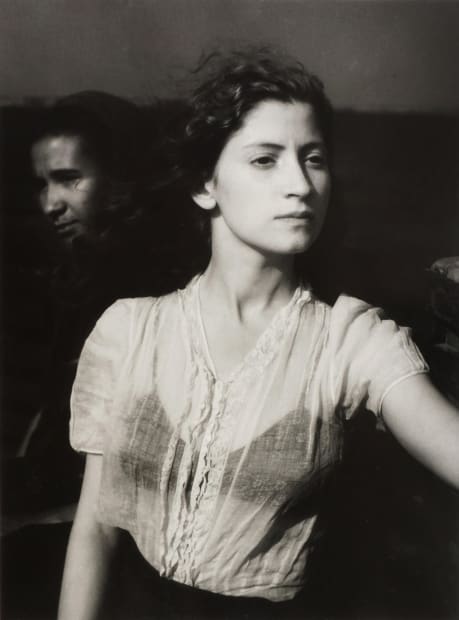
“To me photography is like a quest, or a pilgrimage or a hunt. I love painting, I love music, but photography is what has allowed me to get outside of myself.”
~ Edouard Boubat
“I have often been asked what I think of that photo. What I think, to quote Proust, is that it is charged with something of the “transparent substance of our best moments,” those that we shared while we were young. Boubat and I, before the course of life made us drift apart, caught upon the spell that we were living under back then and what can only be called a poetic adventure.”
~ Lella, 1987
I call this image “The Helen of Troy” photograph, a face that launched a thousand ships.
I never get tired of looking at it. To say that it is haunting does not do it justice. It is one of the most romantic, “muse” images ever taken.
I remember a special day I spent with Edouard many years ago in Paris. He had invited me to view a special exhibition with him of all the images he had taken of his great love Lella. As we walked around the museum together and he was telling me stories of their taking we stopped of course at this, his most famous image. He didn’t say anything. He didn’t have to. His expression and the tear coming from his eye said it all.

“The passing of every man or woman means the passing of some tradition, some knowledge of sacred rites possessed by no other.
Consequently the information that is to be gathered, for the benefit of future generations, respecting the mode of life of one of the great races of mankind must be collected at once or the opportunity will be lost for all time."
~ Edward Sheriff Curtis
In a sense Edward Curtis was a true romantic, a man obsessed with the spirit of Native American people and the richly diverse cultures that shaped them. His obsession/passion cost him his health, his marriage, his family, his finances. He died basically destitute in Los Angeles in 1952.
This is one of his greatest images in his most beautiful of printing formats, a vintage platinum print. It shows Red Hawk, Chief of a small band of Sioux on his way to an Indian Council in South Dakota.

“In all these images, the scenes depicted actually took place in my studio without the use of computer effects. Funt was really reading Lenin’s writings.”
~ Gregori Maiofis
What also makes Gregori’s images look like no one else’s is that he is employing the bromoil transfer process, an extremely complicated and time-consuming technique, that was employed by many of the great Pictorialist photographers in the early years of the 20th Century.
The image is initially printed on a traditional piece of silver gelatin paper and then is bleached to remove the silver pigment and then hand-coated with additional tanning and inking. No two bromoil prints, no matter how expertly made, are exactly alike so each one in a way is unique.
Gregori has lived through turbulent times in Russia, to say the least, so this photograph has an additional gentle political satire to it as well as being such a joyous image.
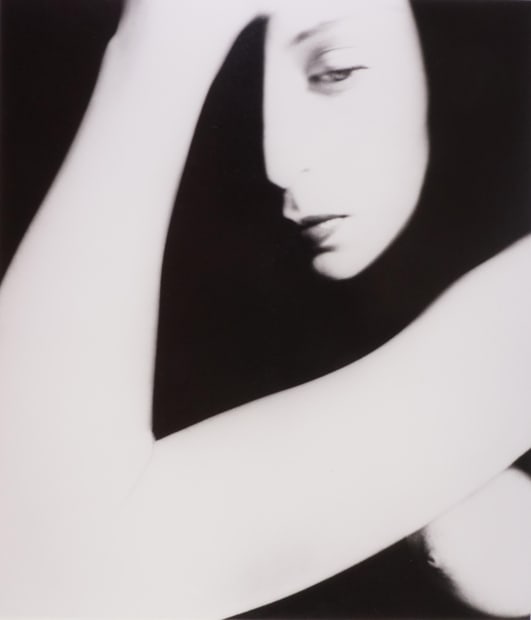
“One day in a second-hand shop near Covent Garden, I found a 70 year old wooden Kodak. I was delighted. Like nineteenth-century cameras it had no shutter, and the wide-angle lens, with an aperture as minute as a pin-hole, was focused on infinity. In 1926, Edward Weston wrote in his diary “The camera sees more than the eyes, so why not make use of it”. My new camera saw more and saw it differently. It created a great illusion of space, an unrealistically steep perspective and it distorted. When I began to photograph nudes, I let myself be guided by this camera and instead of photographing what I saw, I photographed what the camera was seeing. I interfered very little, and the lens produced anatomical images and shapes which my eyes had never observed."
~ Bill Brandt
This is Bill Brandt’s most sought after image. His printing style varied greatly and like all creative, analogue photographers he had good days and bad days in the darkroom.
When I found this print recently I knew that it had been produced not on one of his “good” days but on one of his truly “great” days. The print just glowed and the magic of the image affected me more than any other print of it I had seen over several decades. The collector instinct in me was just so overwhelming.
The subject matter of the female body is one of the most primal themes in all of art history. It is of course from where we all originated.

“The thought which this picture is meant to convey is that Indians as a race, already shorn of their tribal strength and stripped of their primitive dress, are passing into the darkness of an unknown future,
Feeling that this picture expresses so much of the thought that inspired the entire work, the author has chosen it as the first of the series.”
Edward S. Curtis
Indeed this image is the first in Curtis’s magnum opus “The North American Indian”.
There have been many ethnographic works conducted on Native American Life but none have ever operated on any kind of artistic level that Curtis’s work exudes. He was a truly gifted artist above anything else and had an epic vision and the tenacity to fulfill it whatever the personal costs were.
“I want my photos to remind people of something or someone familiar and identify with it in some way. There is no greater gift.”
~ Earlie Hudnall Jr
Earlie has given us so many great gifts with his talent. In this exquisite image he could easily have been on assignment for Vogue but it was just a spontaneous moment he created. He is also a master printer and every one of his prints just glows.
As he says,
“I still love the darkroom. I print every other day. At least every week I’m in the darkroom, printing. It’s a process and people ask “Why not switch to digital?" It’s not the same: the feel isn’t there. In the darkroom you have complete control: you are the master of what you’re doing and how you develop it and how you bring it up.”
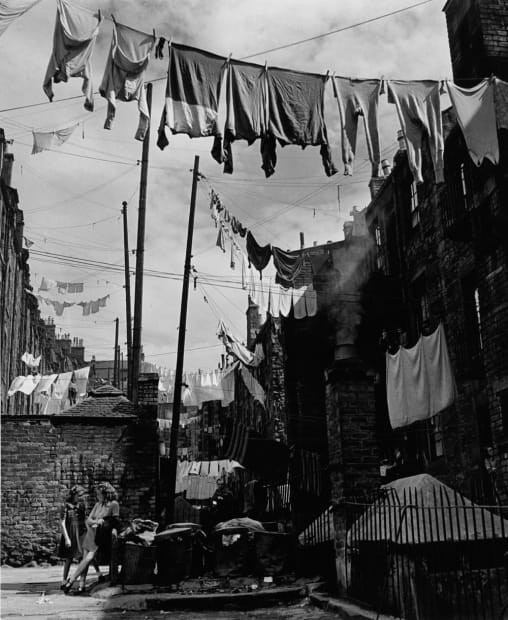
“In Dundee I came across the worst slums I had ever seen. When I took this picture I was next to a 10 story high tenement building. There was only one toilet on each floor and one cold water tap. I got there working on a film about delinquent children and how they were treated in Scotland."
~ Wolfgang Suschitzky
Wolf enjoyed two equally professionally creative careers. One as a much in demand documentary cinematographer where he primarily earned his living. And the other, his more personal work, as a very skilled photographer. Sometimes these overlapped as is evidenced here.
He was well aware that the camera was a strong weapon to advance social change and was an advocate for social justice his whole life in the the tradition of such photographers as Jacob Riis and Lewis Hine and Dorothea Lange.

"First of all, I come up with something in my imagination. I have to come up with a composition which I usually sketch out so
I know exactly what I want to make happen. Or at least make it close as I can to what I first imagined.
Composition in my opinion is the most important part of any visual art. That’s what painting and photography have in common.
There may be different ways of extracting an image, but conceptualising the composition is the most important part."
~ Gregori Maiofis
This was the first image that Gregori created when “Funt The Bear” paid his first visit to Gregori’s studio. A woman sits on a bed, her chin resting on her hand in a moment of deep concentration exploring private thoughts. Beside her sits a huge bear, his paw with enormous claws gently resting on her shoulder. There is such connection in this simple gesture. Magic sometimes happens. The message is clear, that despite the immense difference that separates two beings, language, culture, race, even species, connection is still possible.
Funt was not encouraged or directed to place his paw on the woman. He did it of his own accord. A tender, “human" moment.

“When the first World War started I joined the army. Of course, I took my camera along, and whenever there was a moment I took pictures of my comrades.”
~ Andre Kertész
Great artists often have periods. Their early period, their middle period and their late period.
Kertesz just had one incredible period, his life of creation and constant reinvention. The seeds of his longevity can be seen in his early Hungarian images. He never made grand statements of the often turbulent times he lived through.
When this image was made the horrors of war were raging but true to his spirit what he was most interested in as he was throughout his life were above all the tender personal feelings and quiet moments expressed in being alive.

“I was inspired by the stories that my grandmother told and the photographs in the family album….at an early age I began to understand the importance of documenting one's community.”
~ Earlie Hudnall Jr
Most of Earlie’s sublime work has taken place in the Third Ward Houston community in the city where he lives.
He does not focus on the hardships of poverty and discrimination and hate. Instead his photos capture the everyday life of the area’s residents, filled with moments of beauty and joy.
On a hot summer’s day these boys were just rolling around from scene to scene in front of the camera, shooting marbles, just being kids and free.
As Earlie wistfully says,
“Wouldn’t it be nice if everyone would be free to roam?”
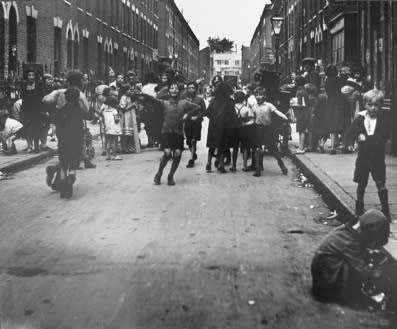
“I am one of those photographers who likes to wait for an opportunity for a picture to present itself, rather than create it by careful posing. I much prefer my subjects to take up a favorable position of their own accord, instead of having to coax them into position.
Perhaps it’s no accident that I have done much photography of children and animals. One cannot arrange either of them to any large extent. One has to wait patiently for the right moment. Children and animals have the further advantage that they don’t complain about the results.”
~ Wolf Suschitzky
Wolf was a dear, wonderful man who lived to be 104 years old. I am convinced he lived to this ripe old age because he never lost his own child-like sense of wonderment.
I know this area of East London very well as I was born not far from it albeit many years later.
But that ragamuffin boy in the centre could well have been me as it was a stance I’m sure I adopted growing up as well.

“The Keres village of Acoma is the oldest continuously occupied settlement in the United States. Perched on the top of the mesa some three hundred and fifty feet above the surrounding valley, it is accessible only by difficult trails partly cut in the solid rock of its precipices. Members of Coronado’s army of explorers in 1540 and Espejo in 1583 noted the “cisterns to collect snow and water” on the rock of Acoma.”
~ Edward S. Curtis
This is one of Curtis’s most magical images. These young women are pictured collecting water on the rock of Acoma using beautiful earthen vases. The contrast of the soft ripples and the harsh and dominating rocks makes for a beautiful juxtaposition.
The beauty of the image is further enchanced by the special orotone process that Curtis pioneered. He printed images directly onto glass and backed them with golden metallic particles. The end result has a luminosity and three dimensionality not found in any other medium. It just glows.
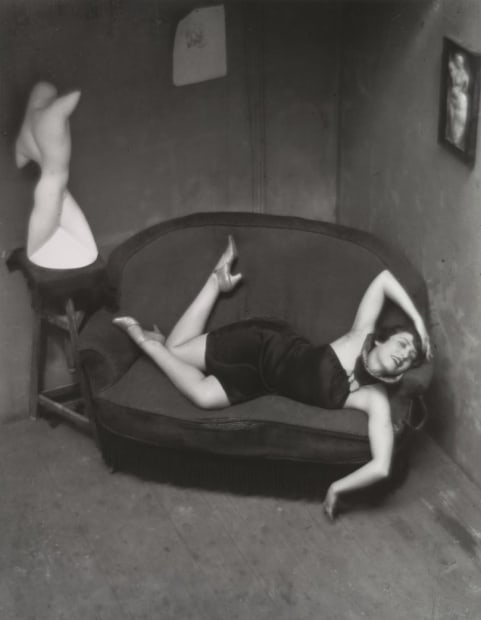
"People in motion are wonderful to photograph. It means catching the right moment - the moment when something changes into something else.”
~ Andre Kertész
Andre was at the epicenter of Parisian cultural life throughout his years there. He was also part of the lively Hungarian emigre community who had also made Paris their new home. Magda Forstner was a Hungarian cabaret dancer who was visiting her fellow Hungarian, sculptor Istvan Beothy, at the same time Kertész was there. Andre asked the dancer to think of Boethy’s sculpture that was set up in the corner of the room. She too, always the professional that she was, twisted herself into a harmonious contortion. The downward perspective and wide angle accentuate the dynamics of a composition that is all angles and is full of Kertész’s joy and spirit.

“Funt was a brilliant actor and a lot of things that he did for me, for my compositions are things that probably no other bear would be able to perform. There were things I wanted to try because, well, you never know -you might get lucky. Or it may all fail. But I got really lucky that day with the photography I call “Funt with Harp”. When you look closely you can see the way his claws touch the strings of the harp. It’s unbelievable how realistic it looks.”
~ Gregori Maiofis
Yes something rare and wonderful. Let’s sit back and relax and enjoy the concert.
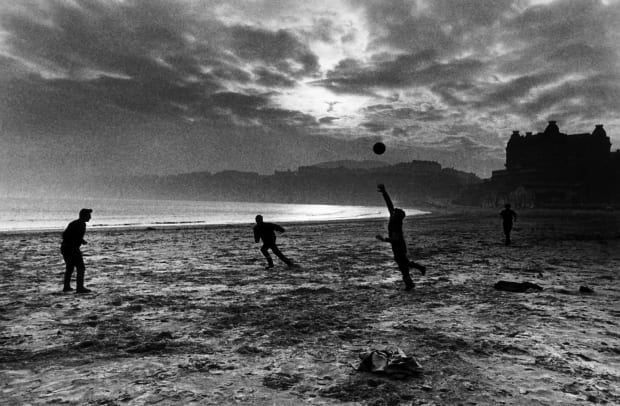
“Photography is the truth if it’s being handled by a truthful person.”
~ Don McCullin
Don is one of the most truthful, down to earth, unpretentious photographers I have ever met.
There is such honesty to him. The last thing he would ever call himself would be an “artist” though that is what he surely is.
He has remained true to his working class roots despite being given incredible acclaim and renown for his work including a Knighthood by the Queen.
He wears his heart on his sleeve and if I had to find one word to explain the power of his work it would be “empathy".
Here in a quiet moment during a lunch break, these fishermen enjoy a brief respite from the harshness and danger of their lives.
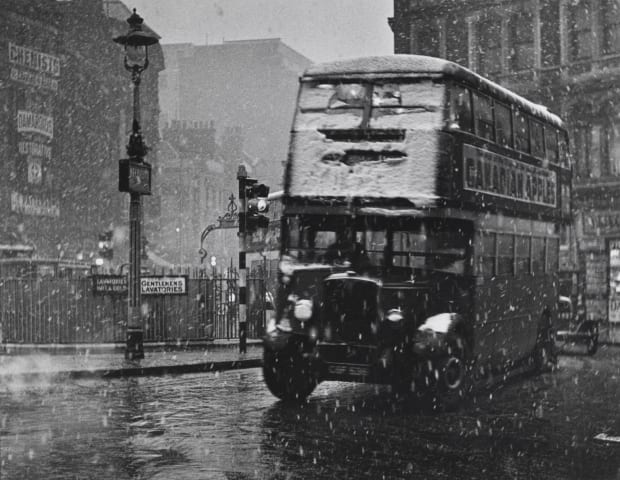
“I was always quite content to be a good craftsman.”
~ Wolf Suschitzky
When I was growing up in London as a little kid I would sit on the top level of a double decker bus and pretend to be driving it and dreamed of one day actually being a bus driver when I grew up. Well that never quite worked out but I revisit that fantasy every time I look at this photograph.
Wolf’s genius was to shoot it in the sleet and snow. It just wouldn’t have the same effect if it had been shot in Springtime or a warm summer’s day.

Andre Kertesz experimented with the notion of “distortion" first back in 1917 with his celebrated “Underwater Swimmer”. He took up the theme again 16 years later whilst living now in Paris. He was commissioned by the magazine “Le Sourire”.
Here in his words is the story of how it came to be and I have always thought “Distortion No. 6" to be the most elegant and seductive and the most beautiful of the series in its exquisite elongation of the torso and the hand.
“They had used graphic arts in their magazine but had never used photography and wanted me to photograph women. Of course I told them I liked the idea - I liked women too. I thought I could do something nice using my ideas about distorting the human figure. The editor was excited and promised to provide everything I would need, model, studio, everything. The studio was arranged with two large circus mirrors which were quite beautiful in themselves. Originally there were two women for contrast the young and the old - then I settled on one. She was a society girl in Paris, a White Russian. The older model was a cabaret dancer. I photographed the young woman over a period of four weeks, usually twice a week. I would develop glass plates and make prints for myself. When I showed them to the model, she told me she was quite sure that it was not her in all of the photographs. When I exhausted the possibilities of the mirror after making about 200 negatives, I stopped.”
~Andre Kertész
As quoted in Andre Kertész: Of Paris and New York. Sandra S.Phillips, David Travis and Weston J. Naef
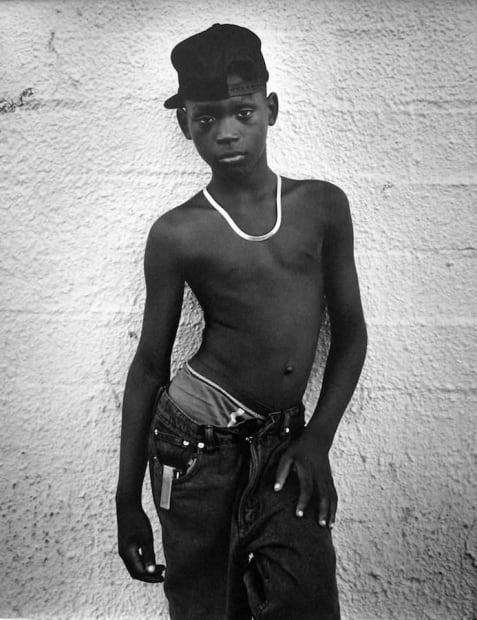
“I approach people in the way in which I was brought up to, and which I was taught, which is to respect people, to respect your elders: “Yes Ma’am, Yes Sir”. Because your subject is giving to you and you are partaking, making a photograph of them. A lot of people would like to say “I’m taking a picture” but you are “making” a picture. And when you’re making a photograph of a person, that person is giving you permission, whether you communicate that just through your eyes or by moving or you ask.
I very seldom ask. I try to place myself within the sight of that individual so that they can see I’m just a person, I’m no threat. I try to be very cautious and I try to be respectful. I think if you use that approach “Good afternoon how are you doing?” You can make a picture of an individual if he or she is alone."
~ Earlie Hudnall Jr.
Earlie’s words are almost like a Masterclass in Portraiture. There is a depth of feeling and empathy and almost a literary quality to this image that makes it for me one of Earlie’s greatest images.
It is tender and heartbreaking at the same time but above all just plain beautiful.

“I don’t have a secret room where I have all these ideas on shelves, where I can just go in and pick one out. It doesn’t work like that. In may case, I do something because I have an idea or an image living in my mind and I feel it must be fulfilled.
It is as if something is knocking on the door. It wants to become real so to speak.”
~ Gregori Maiofis
I am always looking at images with the secret desire to find something truly wonderful and special and fresh. It rarely happens but it happened the day I came across this image. Wow what is going on here I thought to myself? A ballerina performing for a bear. Is this for real or some kind of photoshop manipulation?
It immediately seduced me because here was an image of such charm and humor and whimsy that I hadn’t seen anything else quite like it. I met Gregori and was charmed by him too and his stories. He had befriended a circus trainer and the idea just germinated. His star performing bear was named “Funt” and over a period of 8 years and 4-5 visits Gregori created an extraordinary body of work which I was very proud to exhibit for the first time here. Finding a willing ballerina was much harder than finding a performing bear, Gregori told me.
His genius was to put Funt on a chair which made him the audience as the ballerina started to dance in front of him.
Pure magic.
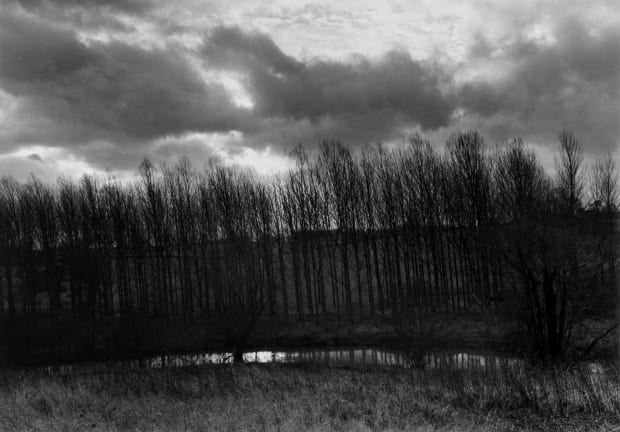
“My solace lies in recording what remains of the beautiful landscape of Somerset and its metallic dark skies, which gives this country an aged and sometimes remote feeling as if the past is struggling against the future. The stillness of silence and sometimes my loneliness broke my imagination, but like the surrounding land, I am fighting to release the past in me.”
~ Don McCullin
The past that Don refers to here is his more than 50 years of covering practically every single war and human suffering story that humanity has inflicted on itself. It came with a price and in an attempt to erase those memories Don started to photograph landscapes mainly surrounding his home in the English countryside.
These are not your typical picture post card views. They are raw and skeletal and there is very little sunshine around. But they are incredibly beautiful in a very primal and passionate way and show Don’s mastery of traditional analogue printing.
They are in fact some of the most beautiful prints I have ever encountered.

“Great photography is a combination of the right choice of detail, the elimination of all that is inessential and the right moment that makes the picture.”
~ Wolf Suschitzky
Wolf left Vienna in 1934 to escape the rise of fascism and moved to Holland where he stayed a year.
He was a photographer’s photographer by which I mean he created such exquisite imagery that many great photographers I have known were in awe of his talent. None moreso than this image, perhaps one of the greatest photographs ever taken in Amsterdam.
It has so many levels of story telling to it, so much going on in a single frame it places the viewer instantly “there” and we become part of the scenario.
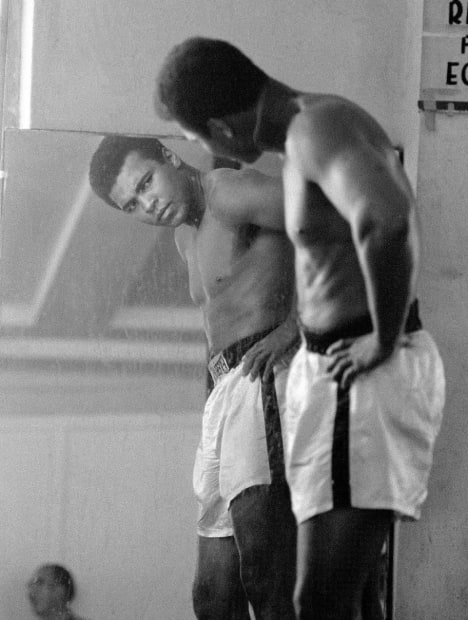
“Ali was a photographer’s dream. He was so good looking. He was what you wanted a fighter or anybody else to look like. And in person his size surprised me because he was built so perfectly to scale. People who never met Ali might have thought he was too delicate for boxing but in the flesh he was huge. And there are some subjects who are comfortable posing and some who are not. Ali knew how to pose. I think it was his vanity that made him concentrate on the camera. But beyond that, he was spectacularly cooperative. A photographer couldn’t miss with Ali. He made your job a success just by showing up.”
~ Neil Leifer
Congratulations to
Ken Burns
Sarah Burns
David McMahon
On your superb 4 part documentary on this amazing 20th Century Hero and Athlete.
Now streaming on PBS.
Bravo.

“I cannot tell you why you respond so emotionally to my pictures…….Many people tell me that certain images have this effect on them……I can’t explain this …. I only photograph what I feel.”
~ Andre Kertész
I am one of those people Andre is talking about. I have responded so emotionally to his work since I first encountered it and have been fortunate enough to have been surrounded by this work over many years.
You can’t really articulate why you connect to someone or something so intensely. It is just part of being alive and open to experience.
After his wife Elizabeth passed away, on whom he had been so dependent most of his life, he retreated to the apartment they shared and became reclusive. His spirits revived when he started to work again on a series of still lives using small mementoes that they collected together. He became obsessed with a small glass bust he had seen in a local book store. The nape of the neck reminded him of Elizabeth and this object became his muse and inspired a new body of work that he shot through his apartment window with the New York skyline as his back drop.
They are just heartbreakingly poignant and to my mind are up there with many of the other great images he created throughout his life.
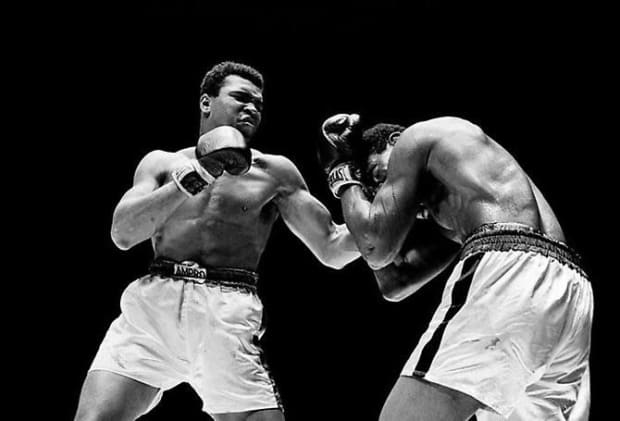
“Champions aren’t made in gyms. Champions are made from something they have deep inside them — a desire, a dream, a vision.
They have to have last minute stamina. They have to be a little faster, they have to have the skill and the will. But the will must be stronger than the skill.”
~ Muhammad Ali
This was one of Ali’s most memorable fights.
As Walter Iooss Jr, one of the great sports photographers describes it,
“This was an important moment in fight history because Muhammad Ali had just changed his name from Cassius Clay. Ernie Terrell, his opponent, refused to address him by his new name. So Ali beat him hard the whole fight and kept yelling “What’s my name?” Needless to say Ali won the fight.”

“Photography has given me a life. The very least I could do was to try and articulate these stories with as much compassion and clarity as they deserve, with as loud a voice as I could muster. Anything less would be mercenary.”
~ Don McCullin
Don, in his early reportage work, produced many powerful industrial landscapes. When I look at this one I feel like I am reading an early D.H. Lawrence novel set in the industrial North. This is as far removed from the Swinging London 60’s as could be, the National divide. He captures the bleak, impoverished and desolate north of England through this haunting image of a steel worker on his early morning walk to the factory where he earns his living.
Don imbues it with such respect and empathy for this man’s hard life which pervades his whole body of work and is reflective of his character as a special human being and photographer.
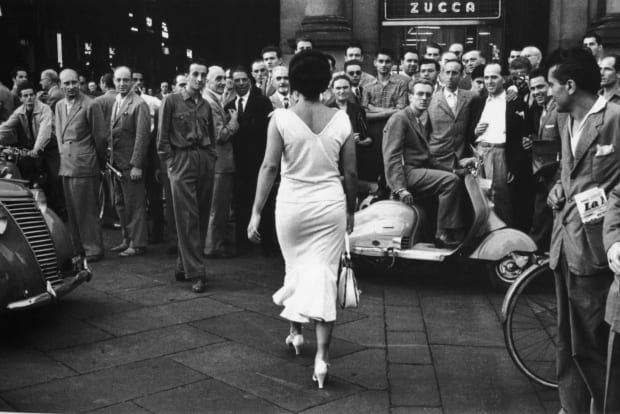
“More than the technical perfection, albeit commendable but not always obtainable with the means available to me, I seek the immediacy of the annotation and the sincerity of the sentiment. I appreciate those who through photography conduct difficult studies in composition and style, but I believe that other inclinations are equally legitimate. And so I believe that photography has its own special field in the reproduction of those aspects and those moments in real life that painting cannot always grasp.”
~ Mario De Biasi
This is one of the most joyous street photographs in the history of Neo Realistic Italian Photography.
Of course it could only have been taken in Italy and it has such a 1950’s feel to it. The object of the men’s attention is Moira Orfei who was known as "The Queen of The Italian Circus”.
Mario, one of Italy's greatest photographers of that period, just followed her through the streets of Milan knowing something “special” was bound to happen in that era of post war optimism. Moira was so strong and self-assured in the midst of all this attention and Mario at the top of his game delivered.
The image has such iconic status that it was used as the lead image/poster for the celebrated Guggenheim Museum in New York Exhibition “The Italian Metamorphosis” in 1994 where it delighted huge audiences. As it still does today.
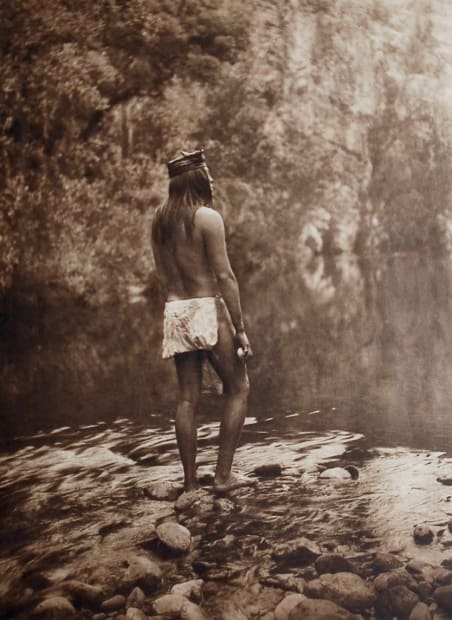
“A young man at a spot on the Black River, Arizona where the dark, still pool breaks into the laugh of the rapids…..Because of the Apache’s cunning, his fearlessness and his long resistance to subjection both by the missionary and by the government under whose dominion he has lived but until recent times never recognized, the Apache, in name at least has become one of the best known tribal groups.”
~ Edward S. Curtis
When Edward Curtis first discovered the Native American Tribes they were in a sad and dilapidated state because of the Government’s national policy of displacement, destruction and containment.
His life’s work was to recreate their former glories at the moment of their virtual extinction and give them back their dignity.

This is no ordinary surf photograph. It is a memory of one of the most important days in World History.
As Walter Iooss Jr describes it,
“On the clear morning of Sept.11th, 2001, I was surfing in front of my house at the end of Long Island when I learned about the planes striking the World Trade Center. A year later, I had a quasi assignment.
“What would you like to photograph on 9/11?" I didn’t know. I think we all had the same feeling, especially in New York: How do you mourn or remember the people who died that terrible day? I decided to go where I had been then. There’s a staircase that goes to the beach in front of my house. I went there at 8:15am with a 4x5 camera and just sat as a few surfers were going out. There were big waves again, as there had been a year earlier, but it was foggy. At 8:46, one minute after the first plane had crashed into the north tower the year before, this fellow walked into the water by Big Rock. This picture of him has special meaning to me. I have no idea who he was. I wish I did.”
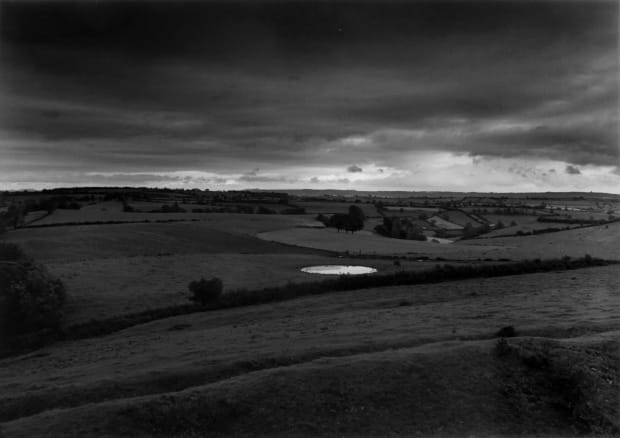
“I retreated to my Somerset home and walking out of my front door in all weather, through fields, between trees and over hills, watching, waiting, being still - that was my therapy. The photographs reflected that.”
~ Don McCullin
Don’s landscapes in recent years have comprised much of his photographic subject matter and output. But each one is unique unto itself in terms of mood and feeling. The skies are often grey and at times the clouds seem even threatening. But they are haunting with their changing conditions of light much in the same way as Constable painted.

“Before the troops of Saddam Hussein retreated from this area they put explosives in 600 oil wells. Here happened probably the biggest pollution ever made by human beings.”
~ Sebastião Salgado
One of the most dramatic and intense bodies of photojournalist work ever created by one of the greatest photojournalists in the history of this medium.

“I made exactly 200 rolls of film in 40 days. I lost a lot of my pictures because working close to the fire was very hot. Sometimes there was a fire inside my camera that destroyed all the pictures inside.”
~ Sebastião Salgado

“In all my long life I never again found this kind of light, it was Dantesque.”
~ Sebastião Salgado
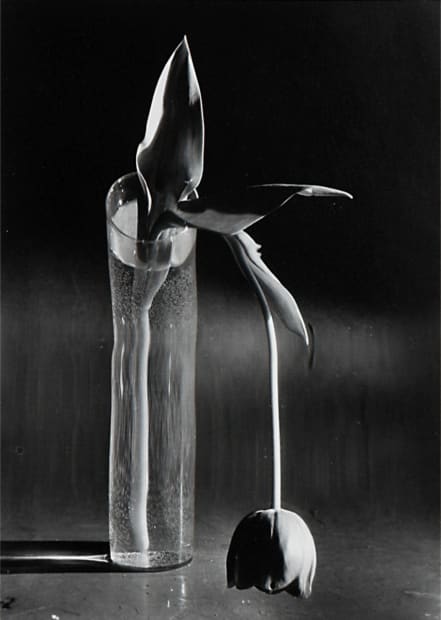
“My work is inspired by my life. I express myself through my photography. Everything that surrounds me provokes my feelings.”
~ André Kertész
New York winters are often cold and extremely harsh and often provoke sad feelings and dark introspective moods.
Such was the case for André. This winter day, February 10th, 1939 to be precise, was no exception. On a brutally cold day he was missing his golden years in Paris where he was treated with great warmth and respect as an important 20th Century artist on a par with his many friends and contemporaries like Mondrian and Chagall. He comes to America with a strong desire to create strong and inventive work and is basically treated as a hired hand by the NY editorial elite with no recognition of his former artistic achievements. He becomes alienated and disillusioned by his lack of success.
Yet still in this state of rejection he manages to create one of his most important images. Using a parabolic mirror that he had brought with him from Paris he creates a highly original distorted Still Life that is also a self portrait of the artist as a wilted flower that nevertheless has the power and beauty of a quiet and haunting masterpiece.

"Walking is part of my photography. You need to walk to create the chance of finding things that interest you."
~ Giacomo Brunelli
Animals have been the core of much of Giacomo Brunelli’s work, but here Brunelli has brought us to the streets of London. But it is not just a street shot. It’s from the literal pavement that Brunelli captures the form and perspective of such a large animal, made even more daunting by such an extreme angle. We understand the immensity of the form of a horse and rider in a new way through the image. Viewing Brunelli’s work we attempt to understand the animal kingdom and its innate wildness, and yet we also see the oddity that there are creatures as accustomed to walking our streets are we are.

“What an artist is trying to do for people is bring them closer to something, because art is about sharing. You wouldn’t be an artist unless you wanted to share an experience, a thought.”
~ David Hockney
"The London Sunday Times sent me to LA to photograph the artist David Hockney. When I arrived at his house, nestled somewhere in the hills of Hollywood, the person who opened the door, welcomed me in, but put their finger to their mouth, meaning to be silent. As soon as I saw on the other side of the room there was David Hockney, he was sitting behind a grand piano, deep in thought, playing some classical tune. I just stood there like a lemon, not quite knowing what I should do. Eventually David lifted his head, acknowledging me. He then stood up and walked to me smiling. The piano kept on playing - it was his private joke. He was very nice and engaging, constantly talking to me about all his theories of perspective and all things relating to that subject. I was only half listening - as I was busy looking for a location to shoot him. He was very relaxed and jovial.
After I photographed him with his dogs (his request!) and alone with all his canvasses he said let’s go for a drive. As we got into his 1960’s convertible he looked at me very seriously and said “I failed my drivers test several times. They said I was not a natural driver”. We got into the car and drove up some steep windy roads. I spotted a location that looked good and we stopped. He then said to me he always liked this particular place. We got out of the car. I started to unpack my Hasselblad and tripod. David went across the street and had a pee, came back, stood exactly the way I told him to. The light was just right, we finished pretty quick. A most delightful day - with a truly talented person who loves what he does. He impressed me, with his probing conversations about Art and Photography.”
~ David Montgomery
Yes for sure when an Englishman sees the Californian light and sun every day something definitely changes within them. It happened to me in 1979 when I first came here planning to stay 2 weeks. Well I’m still here 40 plus years later.
David Hockney is a national treasure and a pleasure to be around and full of life and spirit. His energy is infectious.
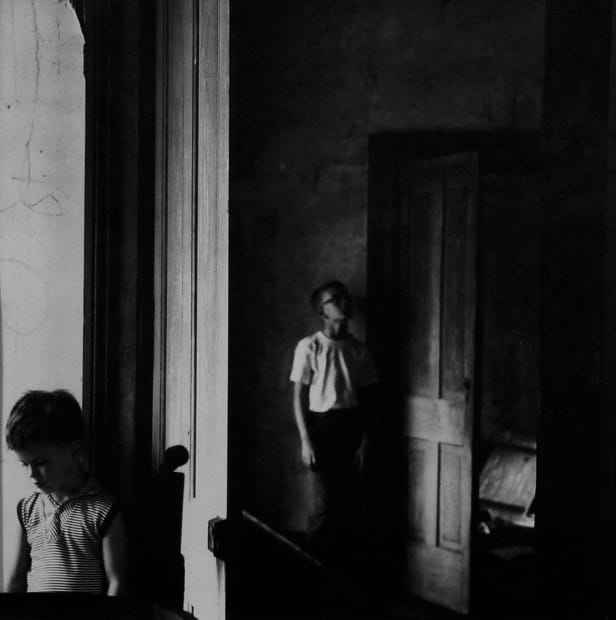
"I want to get people to read stone, tree, so forth & so on through the construction of the picture, to lead them to these things exactly as if it were written out on a page. I think it can be done."
~ Ralph Eugene Meatyard
Ralph Eugene Meatyard's photographs are an experience. Viewers must release expectation and slowly explore the composition. With expert handling of natural light, Meatyard draws the viewer to his photographs subjects, subtleties and shadowy corners. There is a balance to each of these images, the hint of a bedroom, a home, and brotherhood. Somewhere between a familial space and figure there is an unease of never knowing any image wholly that Meatyard eagerly wishes us to explore.

“Shoot what you see, not what you think. A photographer’s philosophy should be not to have one."
~ Manuel Alvarez Bravo
Manuel Alvarez Bravo consistently sidestepped questions about the interpretations of his images, suggesting that people ask his photographs, and not himself, what they mean. A pillar of the medium and one of Mexico’s most iconic photographers, Bravo’s work has always centered itself in Mexican culture.
Themes and motifs are unavoidable in his work. This image brings an almost sinister equine toy horse figure and “unlucky” horseshoe. This unlikely still life murmurs an echo of conquistadors, and colonialism in the form of centaur-like figures from an earlier time in Mexico. But perhaps Bravo has merrily singled out a loaded motif. Mexico’s history echos so clearly in his work, and Bravo had a knack for leading us, like a horse, to water.
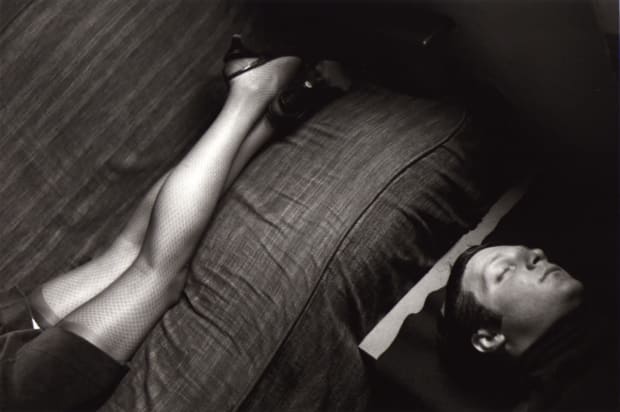
“I’m more interested in the non-decisive: the little nothings that may not be very important, apparently, but that are important, in life and in seeing with the camera.”
~ Bernard Plossu
This image by Bernard has always been one of my favorites from his series taken in Mexico where we see Bill Coleman sleeping on a couch next to Karina Schmidt’s legs while she was reading a book at one of the parties that Bill used to throw. There’s something so mesmerizing in this innocuous snapshot of two friends winding down at the end of the night. It’s the moment within the moment and Bernard is so brilliant at pulling back the veil of the ordinary and letting us glimpse the world through his eyes.
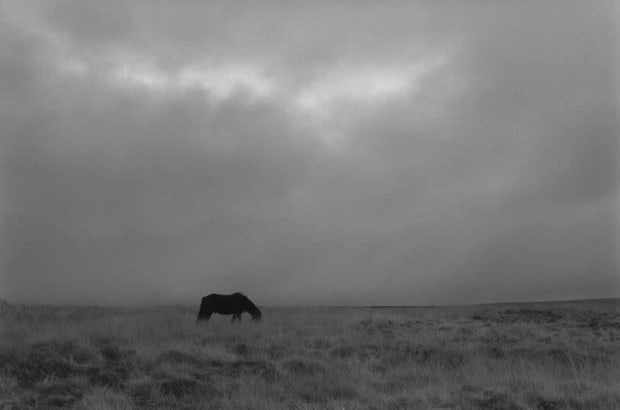
“I don’t speak emotionally about my pictures. That’s for other people to do. I will say that I love my photographs. That’s what keeps me going.”
~ George Tice
George Tice was particularly noted for his printing skill, and also served as a master printer for Steichen as well as printing the portfolios of Frederick H. Evans and Edward Weston. Tice's body of work has continually focused on the American rural and suburban landscape. However this image is part of a vision of Yorkshire created as a result of a joint fellowship from the National Museum of Photography, Film & Television and Bradford and Ilkley Community College. An anthem in photographic form for a turn of the seasons, embracing grey clouds, reflection and perhaps inspiring a day with a Brontë novel, Juliet R.V. Barker authors the afterward of George Tice’s Yorkshire body of work,
“George Tice’s Yorkshire is indeed a world of grey skies and stone walls, as his title proclaims. In almost every photograph, rural or urban, moorland or seaside, the landscape is sodden with rain and the skies are clouded and storm-laden. Somehow, this seems entirely appropriate for the prevailing mood of this collection. This is somber, dour portrayal of a country noted for those very characteristics; it is also a celebration of the spirit and drama of a bleak, sometimes forbidding and inhospitable countryside, which nevertheless inspires passion in its admirers. In their writings, the Brontë’s created an evocative and lasting memorial to this landscape; in his superb collection of photographs, George Tice has done likewise.” Juliet R.V. Barker (afterward to George Tice’s Stone Walls, Grey Skies; A vision of Yorkshire.
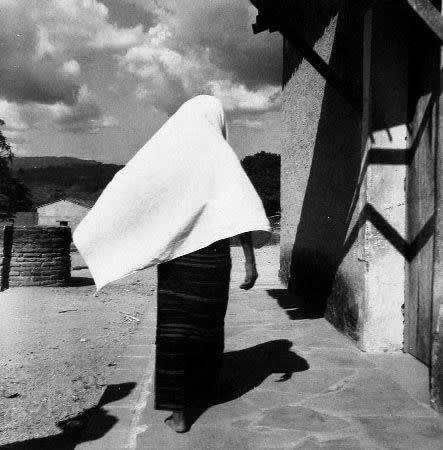
“I can’t conceive of art without a social context … it’s not just what you as an individual want to express; it must be understandable by others.”
~ Mariana Yampolsky
Mariana Yampolsky came to Mexico to study and never left. In her lifetime she worked not only as a photographer but also as a painter and graphic artist dedicated to social and political ideas of anti-fascism. Fully immersing herself in her adopted country, (eventually receiving Mexican citizenship) she documented the complexity of Mexican culture, including its landscapes, folk art, and poverty. Her images transform the ordinary and she was known for her traveling through rural Mexico extensively photographing. Traversing the terrain in her Volkswagen Beetle in the 1960’s when travel through rural Mexico was much more challenging than it is today Yampolsky crated over 66,000 photographs in her lifetime.

“All I’ve ever wanted to do is take stills of people, or take documentaries about people, and try to express to an audience how somebody lives next door. You know what I mean? Just how similar we all are as individuals. And I feel the same way about cinema.”
~ Roger A. Deakins
Roger A. Deakins has spent most of his life behind the lens. That type of time spent looking, really looking has rewarded Roger with an incredible eye, and a body of creative work that spans visual art and cinema. Pondering his photographs, I am struck with how personal they are. Moments held that otherwise might have slipped by, familiar and fleeting. It is Roger’s thoughtfulness and cheeky humor that I hang on to after I have considered his newest book, “Byways”. His natural curiosity and interest in each space he explores with his camera is so clear. “Smoking Break”, is one of my personal favorites. In the window of a speeding train, a private moment is caught and yet delicately preserved. The casual gesture of touching hands retains great dignity. This balance is not an easy feat to achieve. And that is why Roger is so successful, camera in hand, not only does he see the moment, he knows how to phrase it.

“A photographer doesn't just copy reality, but communicates to others what he or she experiences.”
~ Walter Rosenblum
Photographers bring their own sense of a subject to their work, whether it is familiar, mythic, intimate, or majestic. Whatever that is, a horse will be surely know when you are photographing them. In Rosenblum’s company the animal looks at ease, with credit to the photographer. Like us horses are emotional, have strong family bonds, friendships and a keen adaptability. Photographed in cities, rural and wild spaces, the horse will always be one of the photographer’s muses.

"I work in several different groups of pictures which act on and with each other - ranging from several abstracted manners to a form for the surreal. I have been called a preacher - but, in reality, I'm more generally philosophical. I have never made an abstracted photograph without content. An educated background in Zen influences all of my photographs."
~ Ralph Eugene Meatyard
A great friend of the theologian Thomas Merton, and deeply influenced by the concept of “Zen”, Ralph Eugene Meatyards’ interest in the spiritual translated to his work. Perhaps a contemplation of our mortal existence, Meatyards’ premature death at 46 shadows his photographs today. His oeuvre was some of the most bewitching American southern gothic photographs, which cast his family, friends and state of Kentucky as its subjects. Perhaps less well known than other 20th century photographers, Ralph Eugene Meatyard is one of America’s photographic geniuses.

“Once I see an animal I want to photograph, I try to ignore it then I run after it which usually gains a response; sometimes I just stare at it and see what happens. Their reactions are different; sometimes they are curious about the camera and sometimes they get scared by the noise of the shutter.”
~ Giacomo Brunelli
Rodeos, horse girls, dressage, the Kentucky Derby, a knight on a white horse, partner to the cowboys, and our trusty steed. What is it about horses that capture our attention so vividly? Perhaps it’s the wildness, unpredictable in nature even after domestication in the year 3500 BC. Whatever the reason they are majestic creatures. Horses hold their own sense of dignity. As subject matter, their essence has captivated the attention of photographers for decades, and yet Giacomo Brunelli finds a way to capture this “horse bum” completely afresh and with a humorous perspective.
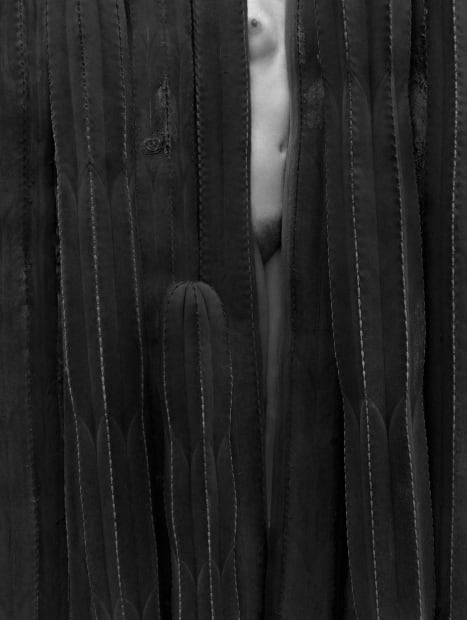
“Each picture... is a small legend about beauty, sex, wonder, and women’s intimate lives.”
~ Flor Garduño
Revealing or not. Intimate or guarded. Voyeur or in one's confidences. You can approach this image in a multitude of ways attempting to understand a lesson about women, sex or beauty. I found this particular quote of Flor’s on her work connects to this photograph wonderfully. Each image is a “legend”. Retold countless of times and with numerous variations. This image of the nude and cacti does not require such meticulous examination to be understood. Rather it must be wholly celebrated for its meaning to you, the viewer, in this moment. Forms revealed in beautiful light.

"I have always felt that I have been standing in the middle ground between two eras, with one eye on the 19th century and the other on the 21st ... all across America we have left abandoned, like carcasses after the feast, that which only yesterday was state-of-the-art invention.”
~ David Plowden
David Plowden turns his eye on the Thunderbird. Looking back at the 1960’s, this car is synonymous with America. The Thunderbird was a manifestation of America’s love of life, technology and style. A powerful machine that embraced design and intrigued generations. Plowden knowingly captures a street scene, whose reign in 1963 would inevitably end. In a world that now races to face climate change and a shift to electric cars, this street scene is clearly of a different time and sensibility.

"Pressing the shutter has remained a moment of joyful recognition, comparable to the delight of a child balancing on tiptoe and suddenly, with a small cry of delight, stretching out a hand toward a desired object."
~ Inge Morath
Even for Magnum Photographer, Inge Morath, Hollywood is a small world. Inge Morath photographs her future husband Arthur Miller’s, second wife Marilyn Monroe on set with Clark Gable. Oh and by the way, the script is by Arthur Miller as well, and was supposed to be a “valentine” to his then wife, Marilyn. A story about wild horses, cowboys, and an aviator “Misfits” competes with old Hollywood itself for drama. As it happened, “Misfits” turned out to be the final film of both actors pictured in Morath’s photograph. Gable died just 10 days after filming finished and Monroe lived on for another year and a half.

"I tried to convey the typical atmosphere of French hotel rooms. There were so many impressions: the poor-looking furniture in a cheap hotel, the 'Amors' embroidered on the curtains. And I was in love with the girl, the girl who is my wife. I think a series of photographs should be compared with a novel or even a poem rather than a painting: let us tell something!"
~ René Groebli
What can I say about René’s beautiful visual love letter to his then newly-wed wife, Rita, that hasn’t been said already by its inclusion in John Szarkowski’s The Photographer’s Eye exhibition at MoMA in 1966. I think that anyone that has ever been in love can find deep and profound beauty in this series of images.
René was married to Rita for 62 years until her passing in 2013 but she will forever live on in these timeless captures of a young married couple on honeymoon. So innocuous and yet so powerful.
Bravo René!

“The camera is an unsophisticated mechanical instrument which, like a mirror, reflects passively without a conscience. The artist must supply the conscience.”
~ Ralph Eugene Meatyard
Ralph Eugene Meatyard, is a master of supplying conscience. His images wrap the viewer up in a haunting consideration of mortality, relationships, and romantic surrealism. The imagery is timeless in nature, and always wholly symbolic of his personal relationships with his family. Meatyard often photographed his own children. However he plays with the nature of the theatre as he casts other children as gestures or figments of his own children. In this way the echo of their own intimacy continues.
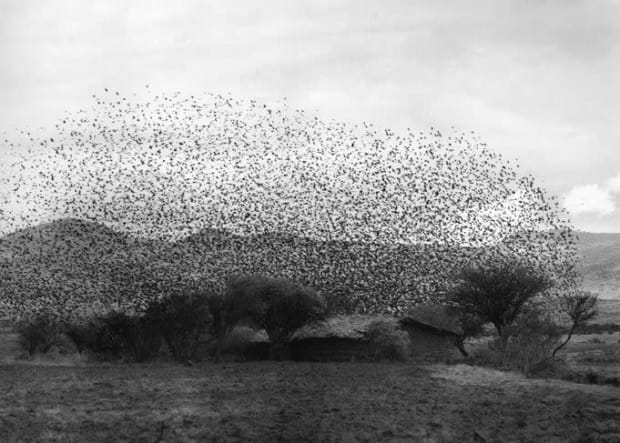
"Photography always shows aspects of things or of other people that you don’t know of, that are revealed through the photographic process.”
~ Flor Garduño
There’s something incredible about the way a photograph can pick out an instant of an experience and almost cauterize it. The shutter drops, the moment is clean, sharp, and permanent. With the shutter speed set perfectly just to capture the chaos of a flock of birds, they are now transfixed. Dotting a negative or silver gelatin print, these figments of birds are imprisoned in the boundaries of the composition. The noise of this very real moment now only a memory guarded by the artist, Flor Garduño. Garduño has a natural way of bringing the immensity of such mythic moments to the boundaries of the cameras lens.
Always quite magical.

"They always say time changes things, but you actually have to change them yourself."
~ Andy Warhol
"I like to capture quiet moments as they are often the most revealing."
~ Lou D'Elia
Normally when one sees portraits of Andy he is always on, playing “Andy” for any photographer who wants to shoot him. He was a master of self promotion, but this has always been my favorite photographs of him. Lou, through his insight and sensitivity, shows us the real and authentic person behind the façade. I find it deeply moving.
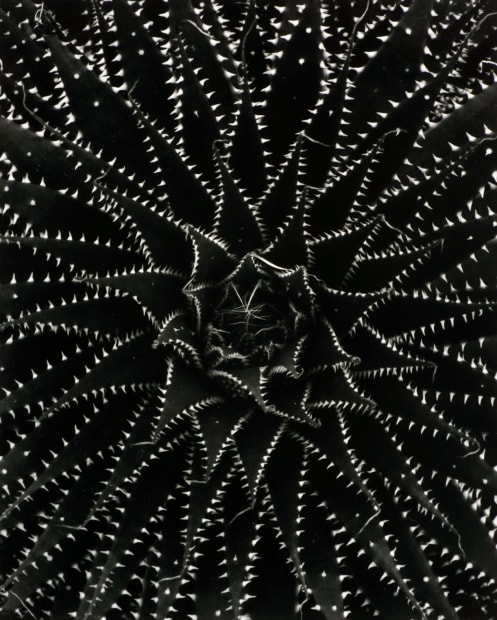
“Growing up in a situation close to the earth especially a solitary situation such as mine, gives one a meditative nature and a tendency to contemplative thought processes which are most appropriate for photography.”
~ Don Worth, Close to Infinity
Don Worth admired nature with a close eye, literally. Consistently using a tight shot to capture beautiful fauna. His images are striking and almost geometric. Here in Southern California, November is the first month that really feels like “fall”. We may not have the same fall colour show as the eastern seaboard but our desert succulents are right at home year round. However this Worth image will stay thriving whatever the weather and even if you may have a slight tendency to forget to water.

“In the woods, too, a man casts of his years, as the snake his slough, and at what period soever of life is always a child. In the woods is perpetual youth. Within these plantations of God, a decorum and sanity reign, a perennial festival is dressed and the guest sees not how he should tire of them in a thousand years. In the woods, we return to reason and faith.”
~ Ralph Waldo Emerson, from “Nature”
There is probably no more inspiring and beautiful place on Earth than the Northern California Redwoods. Once visited it is hard to forget the impact it has on one’s soul and physical being.
Ansel once again captures nature’s essence.

“When things go wrong, don’t go with them.”
~ Elvis Presley
“The wonderful thing about Elvis was that he permitted closeness.”
~ Alfred Wertheimer
Alfred was a joy to work with. Always full of energy and stories.
He was a young photojournalist when he got a call from a publicist at RCA Records who had just signed a young 21 year old singer from the South called Elvis Presley to ask if he would like to photograph him. Alfred had never heard of him nor had anyone else.
But that was soon to change and these first early images would have been impossible to capture a few weeks later. Here is young Elvis taking a date to dinner.
Just magic.
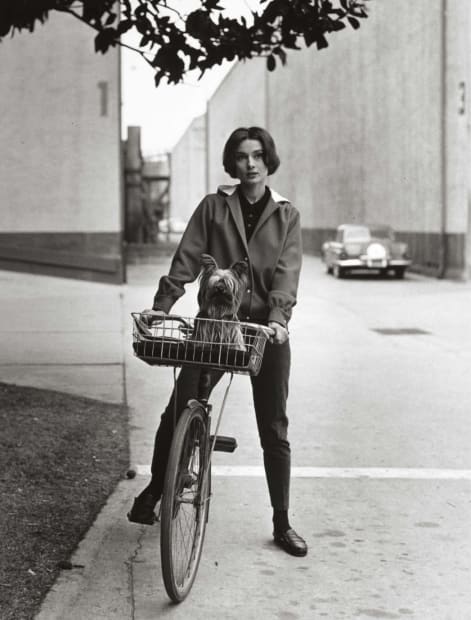
"The best thing to hold onto in life is each other.”
~ Audrey Hepburn
“My Uncle Max invited me into the darkroom to watch him print. I stood on a little box so I could see into the tray. I saw him put a piece of paper in what I thought was water and all of a sudden this magic thing happened-a beautiful image began to appear. That experience stuck with me for a long time.”
~ Sid Avery
We have to thank Sid’s Uncle Max for getting his nephew interested in the magic of images.
Sid Avery enjoyed a long and fruitful life with a specialty of making often elusive and distant celebrities completely normal just like us.
This was an era of the power and influence of the Hollywood Studio system that dominated the world of entertainment way before “streaming” was a glimmer in Jeff Bezos's or Tim Cooks’s eye.
They just don’t make them like Audrey Hepburn anymore right?

“There’s no job too immense when you got confidence.”
~ Elvis Presley
Elvis sure had confidence. And was beyond cool.
I just love the ambience of this image and the Coke bottle is such a wonderful finishing touch.
Alfred established such a unique rapport with the burgeoning superstar.

“In Wildness is the preservation of the World.”
~ Henry David Thoreau
“Of all the animals I have seen, Penguins are the closest to Humans.”
~ Sebastião Salgado
Our friend Sebastião dedicated close to 10 years to document the pristine landscape that still exists in the world in his epic project “Genesis” showing us what the planet was like at the beginning of time. It is his love letter to the Earth and his warning to us of the importance of preserving it. This is one of the truly magnificent and joyful images from that project.
There are more than 12 million Chinstraps (named for the thin black line under their chins) in the Antarctic region where also 90% of the planet’s ice is to be found. The Penguins come here to breed and can dive in Antarctic waters to depths of up to 230 feet.
Of course we see that each penguin has its own distinct personality just as we humans do.
Which one are you? The daredevil, gutsy one at the head of the line who knows no fear? Or the one turning back thinking maybe not quite yet. Let me think about this a bit more.
Enjoy.

“Children are the world’s most valuable resource and its best hope for the future.”
~ John Fitzgerald Kennedy
"Jackie, Caroline and Jack pause in the doorway of their Georgetown home before the senator heads off to his office on Capitol Hill. This is 1959, before the rush of the presidential campaign made such peaceful moments rare. Later, from this same doorway, President-elect Kennedy would announce his cabinet appointments to journalists clustered outside on the snowy street.”
~Jacques Lowe
Not an ordinary goodbye on the way to a normal day at the office that most families experience.
An intimate look by a sensitive photographer of the other “life” of a young politician destined for history.

“I’m more interested in what’s beautiful in the world than what’s disastrous, perhaps because I came from a disastrous country when I was young.”
~ Horst P. Horst
Horst created images that transcend fashion and time. He was a master of light, composition and atmosphere. He created such worlds of sensual sophistication over an extraordinary sixty year plus career. His magical images graced the pages of “Vogue” and “House and Garden”.
He ranks alongside Irving Penn and Richard Avedon and Lillian Bassman as one of the preeminent fashion and portrait photographers of the 20th Century.
What never ceases to amaze me is that he took this image at the age of 81 years old, still as forceful and vibrant as he was in the 1930’s.
He never lost his magic touch.

“The Dawn Wind in the High Sierra is not just a passage of cool air through forest conifers, but within the labyrinth of human consciousness becomes a stirring of some world magic of most delicate persuasion.”
~ Ansel Adams
This particular forest floor invites one to just enter its magical aura, lie down on it, look upwards towards the light and then just close one's eyes and breath in the clean air and just commune with Mother Earth.
It’s as much a photograph as a meditation.
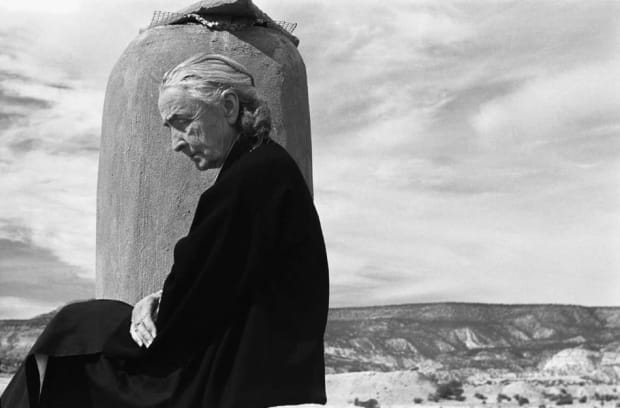
“I often painted fragments of things because it seemed to make my statement as well as or better than the whole could.”
~ Georgia O’Keeffe
“Often the tension that exists between the pictorial content of a photograph and its record of reality is the picture’s true beauty.“
~ John Loengard
Georgia O’Keeffe first traveled to New Mexico in 1929 and moved there permanently in 1949 following the death of her husband Alfred Stieglitz. Although she achieved early success as a modernist painter living the East, the landscape of the desert Southwest gave O’Keeffe her greatest inspiration. She painted familiar subjects such as flowers, adobe buildings and objects found on her walks around her remote home.
In 1966, Life Magazine photographer, John Loegard, was asked to document the daily life of Georgia O’Keeffe at her Ghost Ranch home near Abiquiu where she produced much of her iconic work.
John’s elegant black and white images are some of the best images ever taken of her. He captured the grand, solitary woman in the desert with great sensitivity and insight and this beautiful photograph graced the cover of the March 1st 1968 issue of Life Magazine.

“I worked 12-15 hours a day. I couldn’t stop myself with the brilliant constant light. When you have a sunset in Europe it is maybe half an hour or an hour. Here we had five or six hours.”
~ Sebastião Salgado
In his epic project “Genesis” Sebastião set out to capture Antarctica’s breathtaking beauty and he succeeded I think beyond even his own high expectations. Deception Island with its concealed hot springs is favored by Chinstrap Penguins.
This is the perfect image to place in a child’s bedroom. When my younger daughter was very young and had problems sleeping she used to wake up constantly. When this happened I advised her to start counting the penguins in this photograph which she diligently did and then fell back miraculously to sleep. Photography as a savior as well as an object of power and beauty!

“Never wait till tomorrow. What if tomorrow never comes?”
~ Elvis Presley
The train certainly left the station for Elvis and Alfred was there for the momentous ride in the beginning for this little known 21 year old. Elvis was like an Earthquake erupting!

“Photography tells the truth.”
~ Earlie Hudnall, Jr.
In the hands of an extremely sensitive and intuitive soul which is what Earlie is, he reveals all inner human truth in his quiet art.

“In Time of Storm the clouds seek each other among the crags, and snow falls quietly, whitely, lavishly, filtering into the deepest recesses of theorist, powdering tree and stone and piling high in the gorges and grottoes of the cliffs. As the clouds break a dazzling shining world appears, unearthly and quiet except for the mutter and boom of distant avalanches and the near thudding offers snow dropping from the pines.”
~ Ansel Adams
It is a hard question to answer “When is Yosemite at it’s most beautiful?”
It is Spring or Winter? I would love to hear our readers’ opinion.
If you have to twist my arm, I would have to say that nothing quite beats the feeling of being there after a snow storm. It seems like the art of photography was invented just to capture such a special moment as this.

“When I photograph I distill things down to their essence.
I concentrate on what it is in the viewfinder that excites me and I try to eliminate all the distraction.”
~ Rod Dresser
Rod enjoyed, like so many other great photographers, a deep friendship and mentorship with Ansel Adams who was generous with his time and knowledge. He used this gift to develop his own distinct vision which is exemplified here.
On the surface it seems simple but has a profound power to it due to the physical beauty of the print. And the mood it radiates.

“I don’t think photography has anything remotely to do with the brain. It has to do with eye appeal.”
~ Horst P. Horst
Horst first apprenticed with Le Corbusier in Paris and one of his many “take aways” from that experience was how to architecturally construct a picture plane. He was a master of how light falls on an object and how to balance it with shadow.
This is one of my favorite all time Horst images. A woman wearing white gloves holding a round object. Is she Eve tempting Adam on his birthday with an apple? The crumpled tissue paper is blocking her face and body from view. It all just adds to the elegance and mystery of this supremely beautiful image.
Happy Birthday to any of our readers if this is your special day.
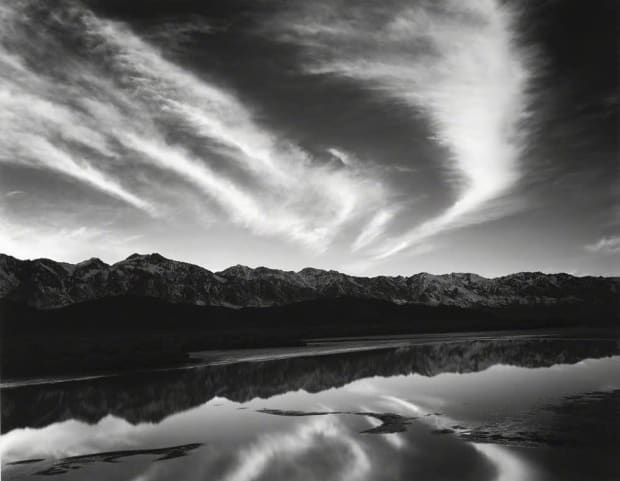
“A great photograph is one that fully expresses what one feels in the deepest sense about what is being photographed.”
~ Ansel Adams
Ansel was/is a towering figure in the History of Photography. He spent a great part of his life walking, hiking and bedding down in the wilderness. It was his laboratory and his reason for living.
He also applied the same attention to every single print in the darkroom and this one is no exception. He infused its glorious tones with the expressive emotion he felt during the making of the negative and its print.

“I am always doing that which I cannot do in order that I may learn how to do it.”
~ Pablo Picasso 1881-1973
“The Maestro’s villa was a photographer’s nightmare with his boisterous children bicycling through vast rooms already crowded with canvasses. I eagerly accepted Picasso’s alternative suggestion to meet later in Vallauris at his ceramic gallery.
“He will never be here” the gallery owner commented when my assistant and two hundred pounds of equipment arrived.
“He says the same thing to every photographer”
To everyone’s amazement , the old “lion” not only kept his photographic appointment with me but was prompt and wore a new shirt. He could partially view himself in my large format lens and intuitively moved to complete the composition.”
~ Yousuf Karsh
Of course Picasso was one of the most influential artist’s of the 20th Century and was much photographed. But this surely is one of the most insightful and intelligent of all the images we have of him.
A perfect rendezvous of two giants in their own field.

“For me photography is not an intellectual process. It is a visual one. Whether we like it or not, we are involved in a sensual business.“
~ Marc Riboud
It was a special day for me in Paris some years back when I was preparing an exhibition for Marc when I discovered this image looking through his archives. I love soccer and I had never seen this image before. In fact I had seen very few images that capture the spirit and atmosphere of the game taken by any really important photographers. But this certainly was a Eureka moment.
Even if you are not an Arsenal fan and prefer Manchester United, or Spurs or Liverpool no one can deny the beauty of this one with its brilliant lines and composition. Very hard not to get caught up in the excitement of the game right?
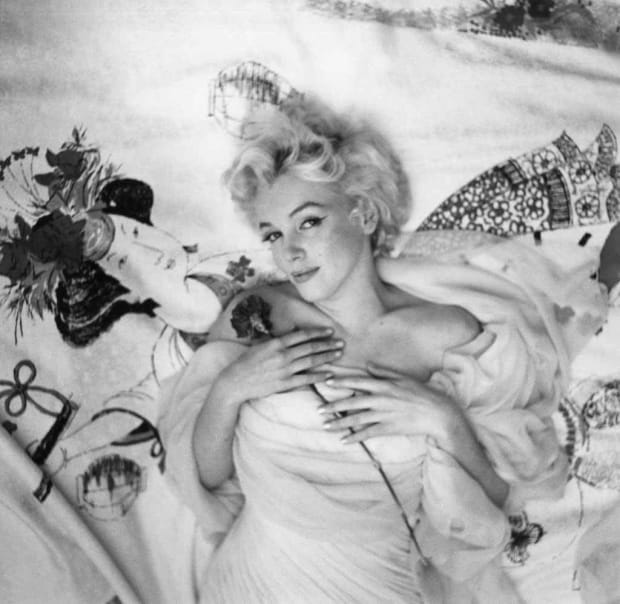
“A wise girl knows her limits, a smart girl knows that she has none.”
~ Marilyn Monroe
“Perhaps the world’s second worst crime is boredom: the first is being a bore.”
~ Cecil Beaton
Cecil was never boring. His volatile creative mind was never turned off. Always stretching into new territories, new challenges. He had only one session with Marilyn Monroe which took place at the Ambassador Hotel in New York in February 1956. The actress turned up to his Suite 90 minutes late and in his diary Beaton admitted that he was “startled then disarmed by her lack of inhibition”.
The photographer compared the actress to “an overexcited child asked downstairs after tea” and added “The initial shyness over, excitement has now got the better of her. She romps, she squeals with delight, she leaps onto the sofa. She puts a flower stem in her mouth, puffing on a diary as though it were a cigarette. It is an artless, impromptu, high spirited, infectiously gay performance”.
Marilyn shot to fame playing dumb yet witty blondes in films including “Some Like it Hot”, “Gentlemen Prefer Blondes” and “The Seven Year Itch”. And Beaton acknowledged that while it was “press agentry or manufactured illusion” that had helped her find success, it was “her own weird genius that had sustained her flight”.
He wrote “The real marvel lies in the paradox-somehow we know that the extraordinary performance is pure charade -the little girl’s caricature of Mae West. There is an unworldly, a winsome naiveté about the child’s eyes that quick as a flash, will screw up into a pair of sexy, smoldering slits and give you a signature “come hither” look.
One of the great Monroe photos for sure.

“If you bungle raising your children, I don’t think whatever else you do matters very much.”
~ Jackie Kennedy
Jackie cherished time alone with her baby daughter. Here she holds Caroline in the nursery of the 3307 N Street home. Jackie was the very essence of photogenic during the Camelot years even when shot from behind by Jacques’s skilled eye.

“This photograph represents my transitional period into group f/64 philosophy which emphasised very sharp focus and full tonal scalar in reaction to the visual softness of the Pictorialism popular at the time..I was becoming confident of my seeing and had considerably developed my craft.
With all art expression, when something is seen, it is a vivid experience, sudden,compelling and inevitable. The visualization is complete, a seemingly instant review of all the mental and imaginative resources called forth bosom miracle of the mind-computer that we do not comprehend.“
~ Ansel Adams
Certainly this was a special breakthrough day in Ansel’s career. A truly amazing example of abstract art but grounded in reality.
One of his most important images.
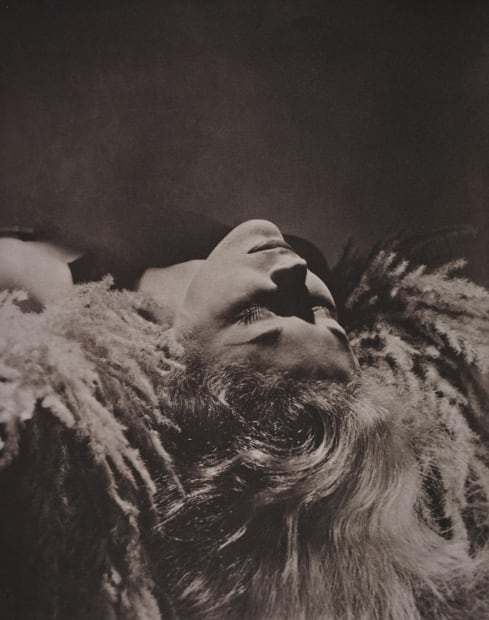
“I felt lapped in calm and beauty and luxury and glamour- and yet as though I were in my own house, not just posing in it but living in it as myself."
~ Lisa Fonssagrives
“You should find these things yourself. You should never copy. I never look at other photographers work. Ypu have to see it for yourself.”
~ Horst P. Horst
Horst was a true gentleman both on and off the set. He established such a close rapport with many of the era’s top models who died to work with him. No one more than the great Lisa Fonssagrives who later married the great Irving Penn.
Here is one of their most beautiful almost surreal collaborations.

“The best and most beautiful things in the world cannot be seen or even touched.
They must be felt with the heart.”
~ Helen Keller 1880-1948
Helen Keller was an American author, disability rights advocate, political activist and lecturer.
Here are Karsh’s moving words about this session which resonate even more so today,
“On first looking into her blind but seeing eyes, I said to myself of this woman who had no sight or hearing since the age of three “Her light comes from within”.
She placed her marvelously sensitive fingers on my face when we met.This was for me, an emotional experience. I sensed she already knew me.
Her faithful companion, Polly Thompson, dialed Braille into her palm. Helen Keller’s kindness and understanding, her alert mind, awed me. I told her this was not the first time we had met or I know her through her writing. Amongst the earliest articles I attempted to read while learning English was her “How to appreciate the Beauty of Sunset”. “Now having met you in person” I said “I will no longer think of you in terms of sunset but of sunrise”.
She quickly replied, “How I wish that mankind would take the sunrise for their slogan and leave the shadows of sunset behind them”.

“To the complaint “”There are no people in these photographs!”
I respond : “There are always two people: The photographer and the viewer”
~ Ansel Adams
I recently came across the beautiful image of a simple moth on a tree stump and was immediately captivated by it. So simple but so haunting and just exquisite and magical in its presentation of everyday natural things.
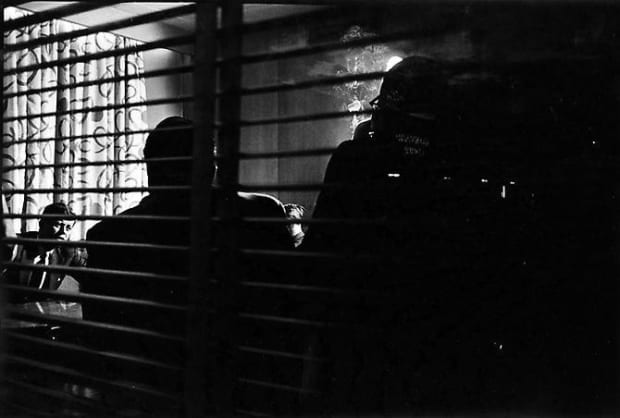
“Let us not emphasize all on which we differ but all we have in common. Let us consider not what we fear separately but what we share together.”
~ John Fitzgerald Kennedy
“The smoke-filled room, attended by city bosses and cigar chomping “pols” is now a symbol of the past. But during the 1960 campaign, “Bosses” were still enormously important and influential, and they had to be courted. Men such as Mayor Dailey of Chicago, David Lawrence of Pennsylvania and Carmine DeSapio or Adam Clayton Powell of New York, still controlled large chunks of votes, some real and some “fictional”, but votes that would be counted come Election Day.
Democrat’s and Republicans alike were guilty of bossism though Democrats seemed to have the edge. Here at a hastily called Chicago airport stopover, Kennedy addresses a group of politicians crowded into a small conference room.”
~ Jacques Lowe
This could almost be a still from a Coppola or Scorsese movie. Intense real drama going on that couldn’t even be scripted.
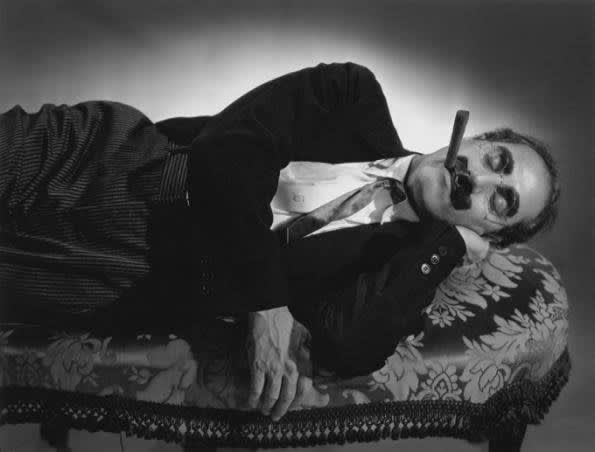
“I intend to live forever or die trying.”
~ Groucho Marx
Ted Allan got his start in his teens taking pictures of aspiring actors in a dime store on Hollywood Boulevard and went on to build a reputation in the entertainment industry that earned him the nickname “Rembrandt” at MGM.
“A Day at The Races” is one of my favorite Marx Brothers movies. Just the name of the character Groucho played in the film, Dr. Hugo Z. Hackenbush puts a smile on my face. During the production of the film, Irving Thalberg who had brought the Marx Bros to MGM suddenly died in Sept 1936 of pneumonia at the young age of 37 years old. Thalberg’s death left the Marx Bros without a champion at MGM and the studio never gave the same level of care and attention to the team they had received under Thalberg.

“Taking pictures is like savoring life at 125th of a second…….it is the instinct of the instant and the instant of the instinct."
~ Marc Riboud
Marc had incurable wanderlust. He had a sixth sense of where great stories were to be found in the world. He was one of the first Western photographers allowed into China after the country’s Cultural Revolution in 1957.
He found himself inside an antique store in Beijing and was presented with this view.
It is one of the great compositions in the history of photography. So many layers of storing-telling and shapes in one frame with an enduring power.
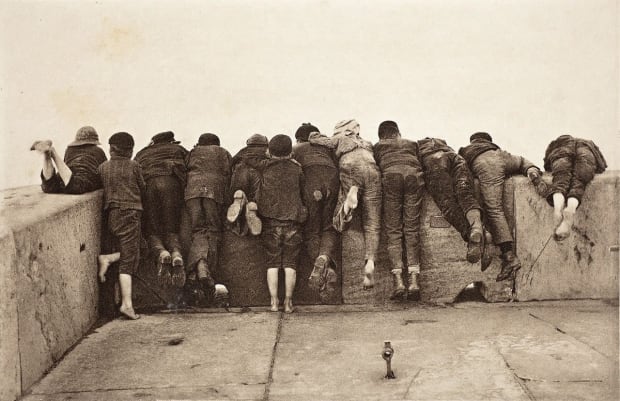
"A photograph gives us the naked truth which has to be clothed by the imagination.”
~ Frank Meadow Sutcliffe
Mr. Sutcliffe was born in the town of Leeds, England a mere 14 years after the birth of photography. He took up photography in 1871. From 1872 to 1873 he photographed the castles and abbeys of Yorkshire for Francis Frith, a pioneer photographer of his time. He then set up on his own opening a studio in Whitby in North Yorkshire, England and developed a great affection and respect for the town and its people which shows through his work.
He became more and more respected and was a founding member of The Linked Ring, a group of pictorialist photographers based in London in 1892. This is one of his greatest photographs and so rare to find in such perfect condition for a print that is over 130 years old.
A group of young boys all standing in a row with their backs to the camera wearing hand me down clothes and leaning over a wall to look down at something. One wonders what it is they are all looking at that is holding their attention. Well that’s the mystery and power of photography.

“The Hebrides, Finland, Italy, Russia, Wales, Nepal……like a nomad, Pentti Sammallahti has traveled the world throughout the decades, finding everywhere the meaning-laden vistas that show how, in chance moments, symmetry and beauty are created. An ability to see form where one wouldn’t think it could be found. A consoling search for a unified, holistic sense of purpose that can only arise when you don’t look for it. And which shows that photography is one of the most translatable languages there are.”
~ Marie Lunquist
Introduction to “Me Kaksi"
It is always a special occasion when we are blessed to receive a new book from Pentti Sammallahti. We have just received his new book “Me Kaksi” which means “We Two”. The book celebrates the chance encounter, the strange closeness and the presence in the world of two beings.
The idea of the duo, the couple of all kinds of accomplices appears repeatedly in his work taken over the last 50 plus years. Whether it is lovers, children, passers-by, travelers, neighbours but also a man and his dog, or two birds, these images tell of attachment, tenderness, the universality of the emotional bond of being in the world together.

“There is no such thing as perfection, there are only standards. And after you have set a standard, you learn that it was not high enough. You want to surpass it.”
~ Jascha Heifetz
“Only moments before this photograph was taken, his household staff accustomed to the violinist guarding his hands, looked on in shock and amazement as Heifetz helped me move a piano.”
~ Yousuf Karsh
During these COVID times I have taken great comfort in listening to classical violin music.
There was no greater violinist than the amazing Russian born Jasha Heifetz and no greater portrait photographer than Yousuf Karsh. This is not just a portrait of the Master’s hands. It is a total evocation of his whole being.
You can almost hear the music.

“The women who intrigued me as models had the most beautiful necks and the most responsive hand movements. At one point I found El Greco and that elongated look became my way of seeing.”
~ Lillian Bassman
Mentored by Alexey Brodovitch at Harper’s Bazaar who promoted her to art director at Junior Bazaar she became a celebrated photographer in her own right along with her contemporaries and friends Irving Penn and Richard Avedon. Creating exquisite black and white portraits of graceful models through experiments in the darkroom, cropping, toning, bleaching and employing the use of gauzes and tissues to manipulate images by hand until they took on the look of mysterious fashion charcoal dreams.
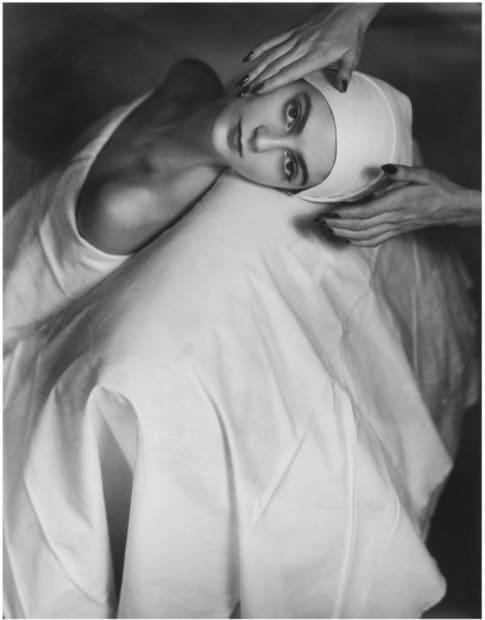
“Working with Horst was a Master Class in Living”
~ Carmen Dell’refice. Model
“Horst was in my opinion one of the great photographers of his time. He was a perfectionist in every sense of the word. There is nothing accidental in his work - everyone, every shadow, every movement enhances what he finds in front of his camera and the results speak handsomely for the success of his approach. His ethos of simplicity and the very way in which he constructed his images - as a form of photographic sculpture has always been an inspiration to me. But most of all everything about Horst resonates with true style and that to my mind is irresistible.”
~ Tom Ford
Carmen Dell’refice started modelling at the age of 15 years old for Vogue and is still vey much demand at the age of 90 years old!
In this, one of Horst’s most elegant and sought after images, a woman looks at the camera sideways with her head in a white turban and resting on a sheet covered headrest. Two hands are massaging her head. In order to shoot this picture Horst gently told Carmen to just pretend she was being groomed for a major event that evening.
I feel relaxed just looking at it.

“You don’t make a photograph just with a camera. You bring to the act of photographing all the pictures you have seen, the books you have read, the music you have heard, the people you have loved.”
~ Ansel Adams
Of course Ansel is so right. He poured his heart and soul into everything he did and it shows.
That is why his work is so outstanding and special. He was completely in the moment and his dedication to his craft and his work ethic are pretty much unparalleled in the history the medium.

"The most luxurious possession, the richest treasure anybody has is his personal dignity.”
~ Jackie Robinson
“I didn’t know anything about shooting baseball. I planted myself between photographers from the New York Times and the Daily News and when they pointed their cameras at something I pointed mine too.”
~ Ralph Morse
I think Mr. Morse is being unduly modest here otherwise he wouldn’t have created probally the greatest baseball shot ever. Hoping to distract Yankee catcher Yogi Berra and disrupt the pitcher, Bob Turvey, Jackie Robinson dances off of third base during the 1955 World Series at Ebbets Field.
Jackie Robinson was UCLA's first ever varsity athlete in 4, yes 4 sports - baseball, basketball, football and track. Even though he started his major league career relatively late in life, at 28 years old, he brought an electrifying combination of hard discipline and explosive talent to the game that thrilled fans, awed his teammates and consistently rattled his opponents.
His fame and legend were hard earned against so many odds. A heroic figure for sure.
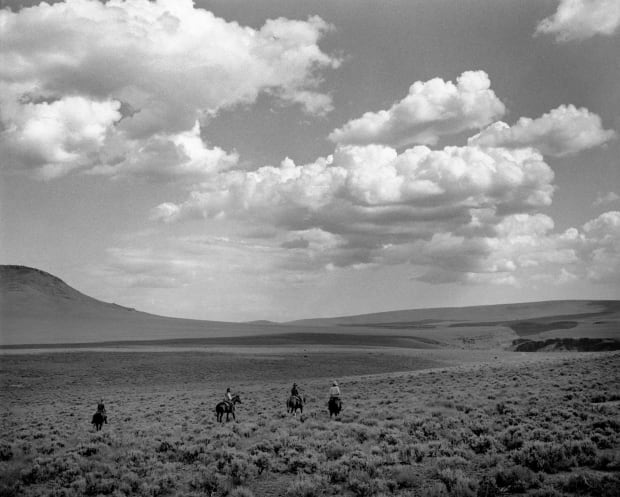
“I was not born to ranching. I was born a day dreamer and I know of no slot for one of those on any ranch.
But the awful truth is that I love all of cowboying even when everything has gone wrong and it’s not looking to get any better.”
~ Kurt Markus
No one has captured the timelessness and has explored the rugged yet romantic spirit of the cowboy better than Kurt has. He places you right there in the landscape and with the people who have chosen to live in this unique way.
A man of quiet determination who considers himself so fortunate to have been given a gift and to have found photography and made his life in it. And I feel fortunate too to have found the beauty and power of his work.
He is in a class of his own.

“Photography must not try to be persuasive. It cannot change the world but it can show the world especially when it is changing.”
~ Marc Riboud
Marc was born in France but he belonged to the world. He had that special ingredient in his make up, the one all the great photojournalists had, Henri Cartier-Bresson, Robert Capa, David Seymour, W. Eugene Smith, Don McCullin, Sebastiao Salgado had/have, a restless eye in perpetual motion.
This is one of his greatest images. Beautiful bodies and gestures and light show the common humanity of a group of Indians drying their dhotis after bathing in the Ganges.
It’s the rhythm of life.

“A great designer does not seek acceptance. He challenges popularity, and by the force his convictions renders popular in the end what the public hates at first sight.”
~ Charles James
“I’ve never not worked. I’m 93 years old and I have been working since I was 15.”
~ Lillian Bassman
During the many years I collaborated with Lillian she was always working, always trying something new and pushing the envelope. She was working till the very last moment she left us at 95 years old. She was a creative force of nature.
This is the quintessence of a great 1950’s fashion shot. One of the greatest fashion photographers ever, one of the greatest designers ever, Charles James and one of the great fashion models of the era Sunny Harnett.
As George Gershwin wrote in ”I got Rhythm“
“Who could ask for anything more?”

“A great photograph is one that fully expresses what one feels in the deepest sense about what is being photographed.”
~ Ansel Adams
A leaf is not just a leaf when being viewed by Ansel Adams. It is a testament to the power of nature but also to its fragility and our social responsibility to protect it for future generations.

“There is no substitute for the power that a straight photograph can give you and no better instrument than a camera on a tripod. All the places we’ve photographed together and been together we’ve used a 4x5 almost to exclusion because your stillness is to be celebrated. To take that sense of space in your expression and your body language is mystical. It’s a real thrill to look at the back of this camera and see the picture you’re going to make."
~ Kurt Markus
“I was never one of those models who would be at all insulted if I had to be photographed from the back. Besides I can make whatever face I want.”
~ Christy Turlington
The great photographer Kurt Markus and the great supermodel Christy Turlington have collaborated for over 25 years now and together have created an extraordinary body of work that transcends mere “fashion” work. Without any conscious desire to create “art” that is what they have indeed accomplished.
As with this specific image even though we do not even see her face the image is just supremely beautiful and moving.

“March 15,1954.
Early in the morning I was driving through the Lorraine countryside toward the iron and steel plant in Richemont where work beckoned me. I overtook these kids and then, further on, I braked to let them overtake me. I silently opened my door and catching up with them stealthily I released the shutter.”
~ Willy Ronis
Willy always told me that this image reminded him of three little penguins separated from their family.
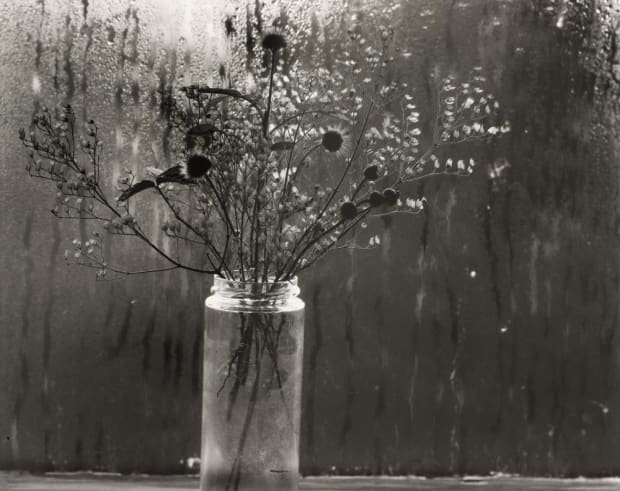
“Music chose me but photography needed me.
The Gods of music on the mountain on the Right were called upon by the mountain of photography as art on the Left.
They said “We are so young and know so little can you please give us something from your realm, somebody to come to invest our photography with the power of music?”. So I became a photographer. The Gods of music sent me over. In both cases I was chosen by music in order to put it into photography.”
~ Paul Caponigro
Paul, like Ansel Adams, started his career immersed in performing the piano. Then they both moved over into the world of photography. Both arenas required an intense focus and dedication, continued practice and immense passion and sacrifice. This is evident in the sublime work they both created.
Fellow travelers. We are so fortunate to be the recipients of their immense talents.
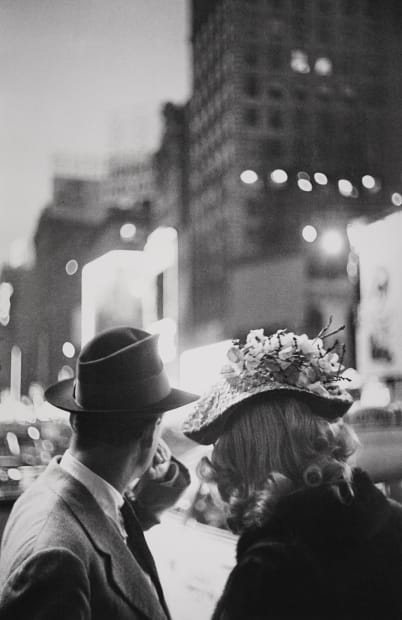
“My intense desire is to record life as I see it.”
~ Louis Faurer
“The city is totally Faurer’s natural habitat. He can be home, at one with people on its streets, in its rooms. However serene or edgy his encounters, one senses Faurer……as being the same as the people in his photographs. And since these people are extremely varied, it’s a transcendent vision that allows the photographer to be so many “others.”"
~ Walter Hopps cited p. 56 in “Louis Faurer "by Anne Wilkes Tucker Merrell Publishers Ltd.
Louis Faurer has to be one of the most under appreciated, elegant and poetic street photographers of the 20th Century.
His images capture the most magical and sometimes lonely moments most of us feel at various times of the daily human urban drama.

“Photography is always like a state of grace, like the appearance of something that I hadn’t foreseen, that surprises me.
If I only did what I had in mind, there would be no emotion. It would be like keeping one’s eyes shut rather than open, like theorizing rather than seeing."
~ Sarah Moon
Sarah always seems to be in a state of grace when she is working and also when she is not working, just talking and reflecting.
Just having a cup of tea with her in her home in Paris is almost a transcendental experience.
You realize you are in the presence of someone quite special whose sensitivity and vision is truly unique. How else can you explain the pure poetry and emotion within her images?
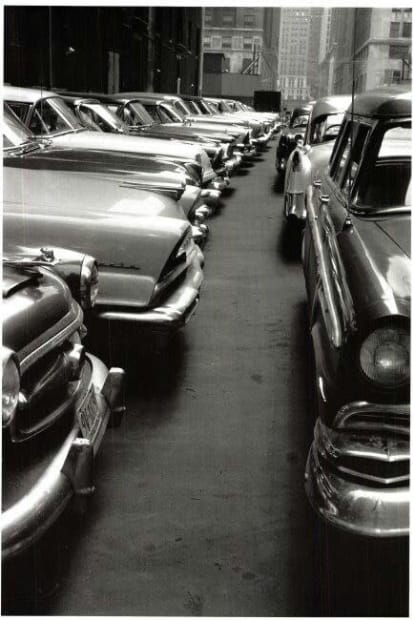
“My way of life, my very being is based on images capable of engraving themselves indelibly in our inner soul’s eye."
~ Louis Stettner
Louis spent more than 70 years photographing on and off in Times Square, New York. It was a constant source of inspiration for him. He would photograph at all times day and night in pursuit of the human comedy. Even when there are no people in his images as in this one of a nearby car park one can still sense the human stories going on with the cars’ absent owners.
A whole time era is evoked.
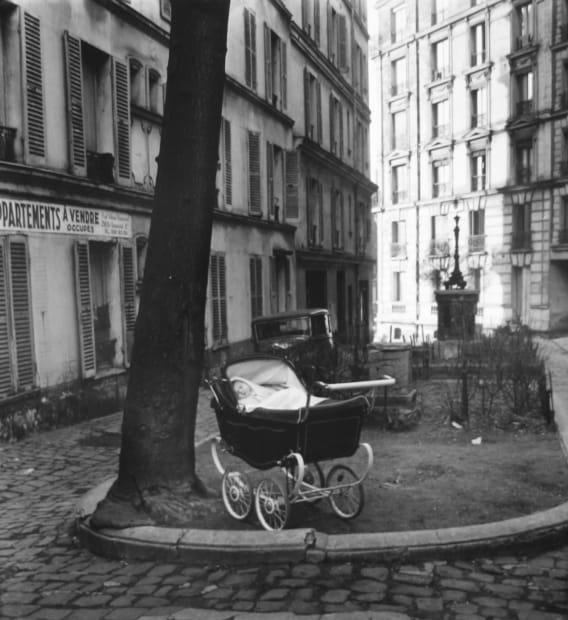
“The actual location did not make me want to preserve it for the future. The child in his stroller was the reason for this shot.
He slept soundly.”
~ Willy Ronis
A charming moment.

“To photograph truthfully and effectively is to see beneath the surfaces and to record the qualities of nature and humanity which live or are latent in all things.”
~ Ansel Adams
On the surface this might seem an image just of some twisted wood, but in the hands of a master it becomes something else, a deep and profound spiritual experience that goes beyond its simple subject matter. I think this is one of Adam’s greatest images.

“Silence and Presence. Both are needed in order to see and feel and make a photograph.”
~ Paul Caponigro
Paul has gone along in his own distinct manner, quietly and with grace and sensitivity to everything around him for over 70 plus years now and has created a unique body of work that very few photographers can come anywhere close to emulating.
To call him a Master of his craft are not sufficient words to describe what he has accomplished. One just has to examine the body of his work to be left speechless. And in awe.

“Louis Faurer, a newcomer in the field of documentary reporting, is a lyricist with a camera, a seeker and finder of magic in some of the highways and byways of life.”
~ Edward Steichen 1948
The great Edward Steichen wrote these accurate words about Faurer on the occasion of Steichen’s first large survey exhibition of photography at the Museum of Modern Art which included Faurer.
I always sensed that Faurer was somewhat of a tortured romantic as is evidenced by this haunting, longing image of a solitary woman in Times Square. What is her story? I’m sure Faurer never knew and neither will we but it doesn’t matter. It is still beautiful.
![Willy Ronis, Ménilmontant [Devant Chez Mestre], 1957](https://artlogic-res.cloudinary.com/w_620,h_620,c_limit,f_auto,fl_lossy,q_auto/ws-peterfetterman/usr/images/feature_panels/image/items/65/657d3ed64a9d4bcca9d0982af9451ddd/726610.jpg)
“The painter Daniel Pipard, a child of Menilmontant, had introduced me to a young couple from there whom I photographed in November 1947."
~ Willy Ronis
Belleville and Menilmontant are in an area that was long ignored by Parisians until Willy really discovered it and put it on the map in 1947.
His first great great book was the result of strolls through the narrow streets of the then largely working class Eastern Paris district.
I was fortunate enough to see a wonderful exhibition of all his images from this time in a beautiful municipal art center there, confirming his status as one of the most important French humanist photographers.
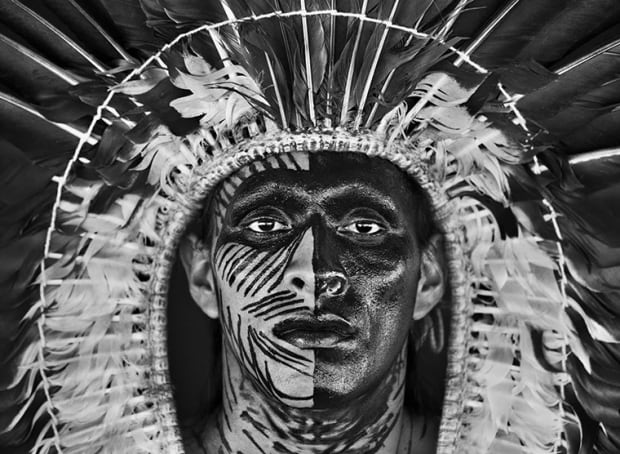
“In this project I have no photographs of deforestation. I have no photographs of the fires. I have only photographs of the alive Amazonia, the real Amazonia."
~ Sebastião Salgado
Wherever Sebastiao’s new traveling Museum Exhibition “Amazonia” has been exhibited, crowds have been amazed by the power and the beauty it exudes. The humanity of the indigenous tribes is at the core of it but they too are vulnerable as their way of life just like ours are severely impacted by the new weather patterns.
As Salgado cautions us,
“Climate change has changed the system of rain. The droughts are longer. It is much hotter. The system of agriculture they’ve had is completely transformed.”
This project is a call to action for all of us who are concerned for the future.
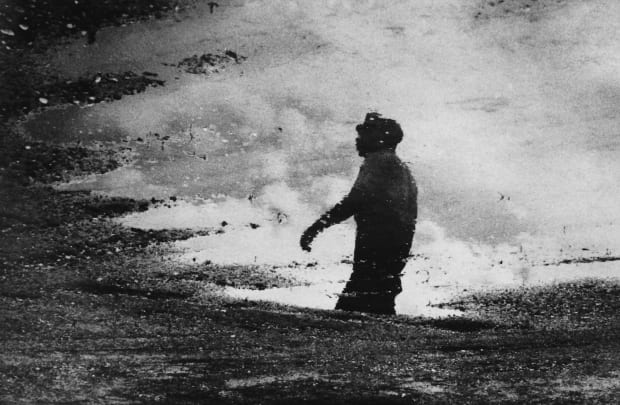
“Darkness cannot drive out darkness; only light can do that. Hate cannot drive out hate; only love can do that.”
~ Martin Luther King, Jr.

“Human beings are an inexhaustible source of wisdom.”
~ Louis Stettner
Louis was a man of enormous compassion and empathy. There is almost something literary about many of his great images.
Here in this rare image of his he shows us his insight into ordinary peoples' lives. There is no condescension, just respect and understanding of one ordinary waitress’s life post-war trying to keep it all together with dignity.

“The only way a work of art can become great is for one to acknowledge that it doesn’t belong to anybody. The greatness is in constantly giving back, coming to an acknowledgement of the source.”
~ Paul Caponigro
Beauty emanates from every master print that Paul acknowledges it fulfills his vision and releases it out of his sacred darkroom into the world. No two images are alike. He explores deep inside his soul again and again and creates a cacophony of varied beauty.
Please never stop.

“Being in New York, I was most impressed with the loneliness and latent show of emotions in the subways and cafeterias.
They weren’t pictures of people. They were pictures of the way I felt.”
~ Ted Croner
Ted was one of the celebrated Alexey Brodovitch’s most talented students in his famous teaching “lab”. He found his voice on the streets of New York exploring its urban rhythm and human nuances. This was one of his breakthrough images set against the marquee of one of the most powerful and gritty films of the 1940’s

“Free man, you will always cherish the sea” (Charles Baudelaire)
Lovers you will always cherish calm waters - my modest addition.
Photographing couples on the banks of the Seine in springtime -
what a cliche!
But why deprive yourself of the pleasure?
Every time I encounter a pair of lovers, my camera smiles: let it do it’s job. Here the couple is double - the tree slanting through the image unites rather than divides.”
~ Willy Ronis
In the hands of a master a commonplace occurrence, lovers on the Banks of the Seine becomes something truly special and engaging. It’s the structure of the image with the tree separating the two pairs of lovers that more than doubles its impact and emotion.
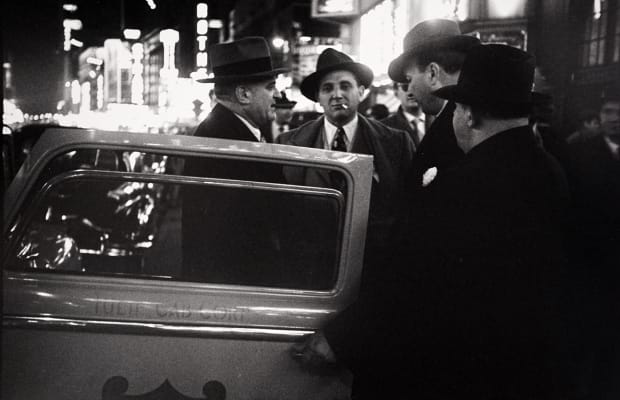
“New York enchanted and amazed me. Everywhere a new discovery awaited me. I have an intense desire to record life as I see it, as I feel it. As long as I’m amazed and astonished, as long as I feel that events, messages, expressions and movements are all shot through with the miraculous, I’ll feel filled with the certainty I need to keep going."
~ Louis Faurer
Louis was filled with restless energy to explore all varieties of urban life which he brought to life with his skilled use of techniques such as blur, green, reflections, slow film speed, low lighting. He was as exacting in the darkroom and was a tireless perfectionist when it came to cropping and printing his work.
This image could well be a still from a Scorsese movie. His work explored the great variety of the city’s human faces as well as many of his more well known contempories.

“Fashion came into my life by accident. Alexander Liberman had seen an exhibition that I had and he said “I like what you are doing. Why don’t you come and talk to me at Vogue and we’ll see what we can do together.”
~ William Klein
Isn’t life often like that? A chance encounter can change one’s fortunes and path. Meeting the great art director for Condé Nast was certainly a life changing event for Bill which resulted in many of the genre’s greatest images.
There is a good reason why Bill chose this particular image to place on the cover of his book “In and Out of Fashion”. It has everything one could want in a fashion shot. Pure beauty mixed with allure and seduction.

“It’s important to have your own visual signature, something that enables the viewer to instantly know that this is the work of a specific photographer. It’s not about style, it’s the way you put an image together. It’s our own personal way of perceiving our own individual reality.
Photography is an unusually amorphous medium in that all you really are doing is releasing the shutter. However the structure of the medium rests within the intelligence of the eye.”
~ Ralph Gibson
I guess if you or I had been walking down a street in Paris in 1974 which perhaps we were, we would have seen many classic Citroen cars but I doubt we would have come up with an image as elegant as this one.
That is because we are not great photographers in the way Ralph is. He for sure has a distinct visual style and the intelligence to go with it. I could stare at this image for hours and never lose interest.

“The session took place on May 25,1955 in the old fashioned atmosphere of a suburban house, well lit by daylight.
I had stretched a tablecloth across the window, up to a few inches above the top of the frame. Direct sunlight hit the top of her head, the left shoulder, part of the back of the chair, and part of the white bedspread, which is visible in the bottom right corner. It is the reflection of this last ray of sun on the bedspread that faintly lights the small of the model’s back as well as the bottom of the armchair. Her left side and thighs are illuminated by the sun filtering through the tablecloth, on which the projected shadow of the window railing can be seen.
Difficult print: detail is required in the tablecloth curtain and the bottom third of the negative must not be drowned in darkness.”
~ Willy Ronis
However many difficult printing challenges this particular negative presented themselves to Willy he certainly overcame them to produce one of the most beautiful and original nudes in 20th Century Photography.
Tasteful and elegant it has all the power of a great Old Master Dutch Master Painting.
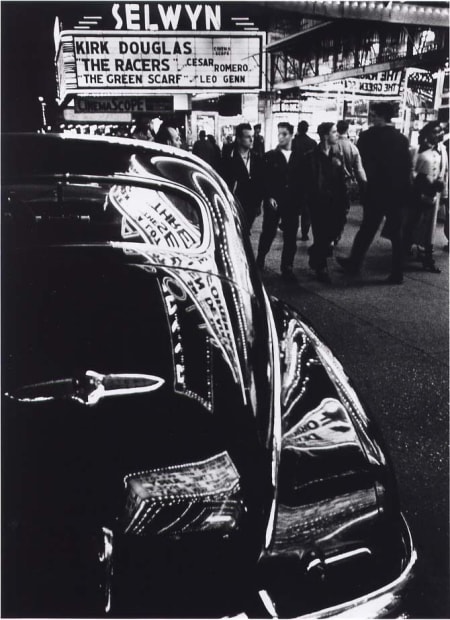
“I went to work with a vengeance——directed as much against photography which I was discovering as the city I was rediscovering. My secret weapon was a peculiar double vision half native, half foreigner. The pictures I took for the diary book were my first “real” photographs. In Paris I had started to see what I could do with a camera but this time I had a bona fide project.”
~ William Klein
William returned to NY after his initial sojourn in Paris to the city of his birth with a vengeance.
His passion, energy and no rules attitude created one of the most important bodies of work, in that most unique of cities, that the medium has ever seen.
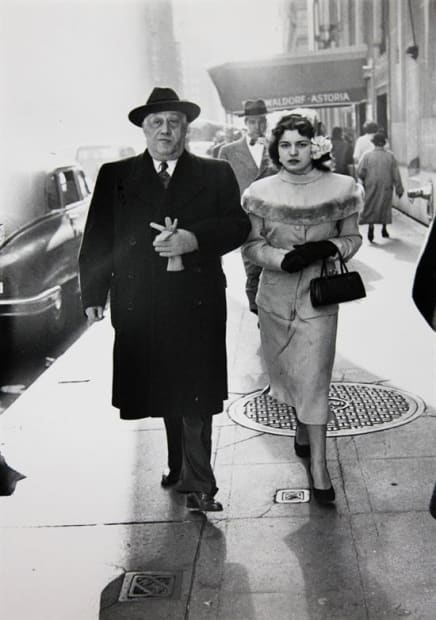
“Robert Frank and I worked together and if the word “influence” is to be used we influenced each other. We influenced each other without any tension, with total acceptance. We never spoke about the images. We never criticized each other. We influenced each other without jealousy. What other word can I use? Without resentment. That’s Robert.”
~ Louis Faurer
Louis, a close friend and colleague of Robert Frank, had the same penetrating eye and intelligence in showing us the veneer that people often project especially in public on the street.
Central casting could never deliver a face like this to play Daddy Warbucks better than this man who Louis observed in all his pomposity.

"Even though fixed in time, a photograph evokes as much feeling as that which comes from music or dance. Whatever the mode, from the snapshot to the decisive moment to multi media montage - the intent and purpose of photography is to render in visual terms feelings and experiences that often elude the ability of words to describe. In any case the eyes have it and the imagination will always soar further than was expected.”
~ Ralph Gibson
A couple embrace at the Carrousel du Louvre in Paris. Couples embrace everywhere, but this observed embrace has a special power and force unlike many others one sees. Why is that?
It has to be that that Ralph is a storyteller with an emotional sensitivity to everything around him and the skill and experience and great talent to fulfill it.

“I told my father when visiting “The Family of Man” exhibition with him at the Helsinki Art Hall in Winter 1959-60, I said to him that I know what I want to do in my life, to become a photographer”
~ Pentti Sammallahti
I think two significant events happened in the 20th Century that inspired many people to become seriously interested in photography. One was Steichen’s ground breaking exhibition “The Family of Man”. We must thank Pentti’s sensitive father for bringing his son to visit the exhibition. The second event was the publication of Henri Cartier Bresson’s seminal book “The Decisive Moment”, still the greatest photo book ever published.
The irony here is that I first became aware of Pentti’s work when Henri included this image in the first exhibition at his new Fondation Cartier Bresson, which opened with the exhibition “My Hundred Favorite Photographs". In 2003 a year before Henri passed away.
Thank you Henri, Thank you Pentti . Two of my all time favorite people.

“The studio became, for each of us, a sort of neutral area. It was not their home, as I had brought this alien enclosure into their lives: it was not my home as I had obviously come from elsewhere, from far away. But in this limbo there was for us both the possibility of contact that was a revelation to me and often ,I could tell, a moving experience for the subjects themselves, who without words-by only their stance and their concentration-were able to say much that spanned the gulf between our different worlds”
~ Irving Penn
I still remember the day I first bought a copy of Irving Penn’s amazing book “Worlds in a Small Room” so many years ago in London at Foyle’s Bookstore. It literally transported me to places I could have only dreamed of visiting. It still has that same effect today, a testimony to Penn’s unique craft and range of interests.
Penn was an inveterate traveller with an insatiable curiosity about life and people which sustained him for 92 years. He set up his ambulant studio for this image in the town square of Guelmin, southern city in Morocco. Guelmin was home to an ancient camel market and known as the “Gateway to the Desert" where he invited these children to pose.
His empathy just shines through.
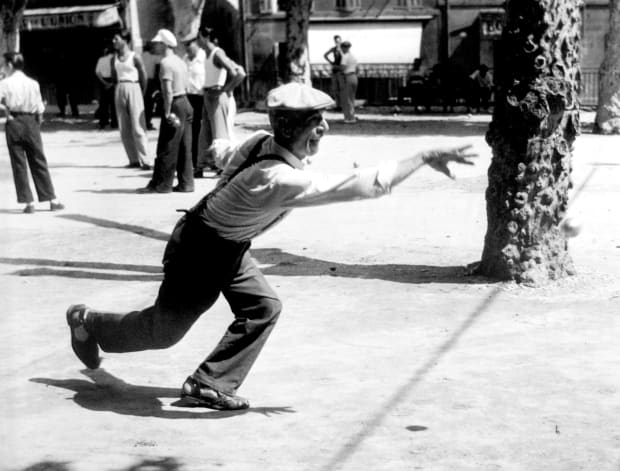
“We were spending our summer vacation near Aubagne where I photographed this pétanque player. It is an unordinary scene, but I found the man very colorful and graceful in his posture.”
~ Willy Ronis
I think many of us would like to grow old like his. With a smile on our faces doing something we love.

“A picture can express a universal humanism or simply reveal a delicate and poignant truth be expressing a slice life that might otherwise pass unnoticed.”
~ Steve McCurry
For those in need, a street corner or stop sign offers an opportune location to ask passers-by for help. Yet, while only separated by the thickness of a window, the distance between the inside of this car and the woman with her child is vast.

“I had the Guggenheim, I had photos in the Museum of Modern Art and I was starving!”
~ Max Yavno
Max was one of the great American photographers of his era and the first photographer I met when I moved to California in 1979. He was the great Chronicler of Los Angeles in the same way Berenice Abbott was the great chronicler of New York. I learnt so much from him about the logistics of the city and its hidden urban beauty.
He was accorded many awards including the Guggenheim in 1951 and no less a curatorial giant than Edward Steichen selected 20 of his photographs for the permanent collection of New York’s Museum of Modern Art the year before in 1950. But he struggled most of his life to actually earn a living from his talent, not an unusual story sadly.
His hand-crafted, dark room prints are just amazing to behold especially this one with its" film noir" graphic simplicity. What an eye!
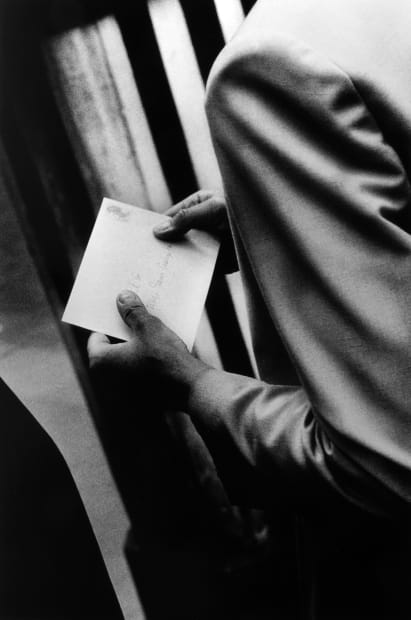
“My intention is to make my perception of anything become the subject itself. I aim to make photographs that have no beginning. And no end.”
~ Ralph Gibson
When I first saw this photograph I could not understand why I was so completely drawn into its “mise en scene”. A waiter is carrying a letter to someone in a restaurant. Is that what is happening? I’m not sure. Who is the recipient? What message is contained in the envelope? Is it a goodbye?
I will never know and Ralph Gibson the photographer who created it will never know. But it doesn’t matter. I am moved by it and caught up in it and I hope you will be too. And really that is all that matters.
I think it is beautiful. That’s all.

“The world is so interesting and every place is worth to visit. Especially I love to photograph in remote, quiet places with vanishing things. When the world has changed, the photograph is left.”
~ Pentti Sammallahti
Many of Pentti’s best landscapes are just exquisite visuals haikus. Just like this one. One can stare at it forever and just get lost in its beauty.

“I accepted the obligation of showing the clothes. Sharp, all the buttons, pleats and whatever. As long as I did that I found I could do pretty much what I wanted with the rest - backgrounds, attitudes, situations.”
~ William Klein
Working with one of the great models of her generation, Simone D'aillencourt, William Klein created one of his all-time great fashion photographs. Its success is because it is all attitude not only the model’s but everyone around her.
Those lips! Not to mention the clothes.

“My eyes search for people who are grateful for life, people who forgive, whose doubts have been removed, who understand the truth, whose enduring spirit is filled by such piercing light as to provide
their present and future with hope.”
~ Louis Faurer
Louis was one of the greatest, least well-known important street photographers of the 20th Century. Real success seems to have eluded him his whole life unlike many of his great contemporaries like Robert Franck and William Klein. Even Diane Arbus was his student. He died penniless in a nursing home on the Upper West Side in New York in 2001.
His personality was quirky to say the least but his talent was undeniable.
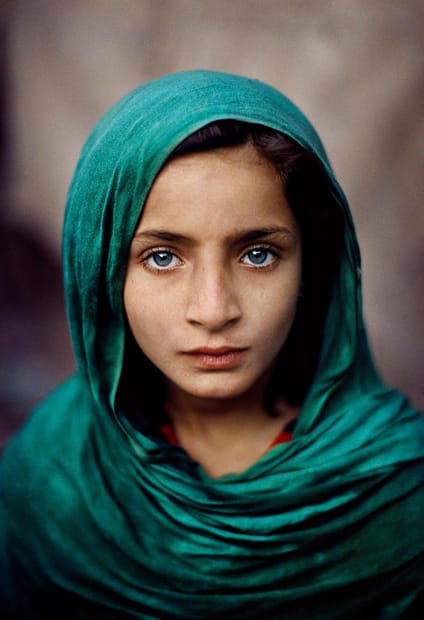
“Most of my photos are grounded in people. I look for the unguarded moment, the essential soul peeking out, experience etched on a person’s face.”
~ Steve McCurry
"Haunting" does not do justice to the power of this image. I think this is one of Steve’s greatest portraits to date.
This young child has fled the civil war in Afghanistan and was living in Pakistan when McCurry took this picture. The delicate emerald shawl, her rich blue eyes and serene gaze all evoke a deep sense of the spiritual.
This website uses cookies
This site uses cookies to help make it more useful to you. Please contact us to find out more about our Cookie Policy.
* denotes required fields
We will process the personal data you have supplied in accordance with our privacy policy (available on request). You can unsubscribe or change your preferences at any time by clicking the link in our emails.